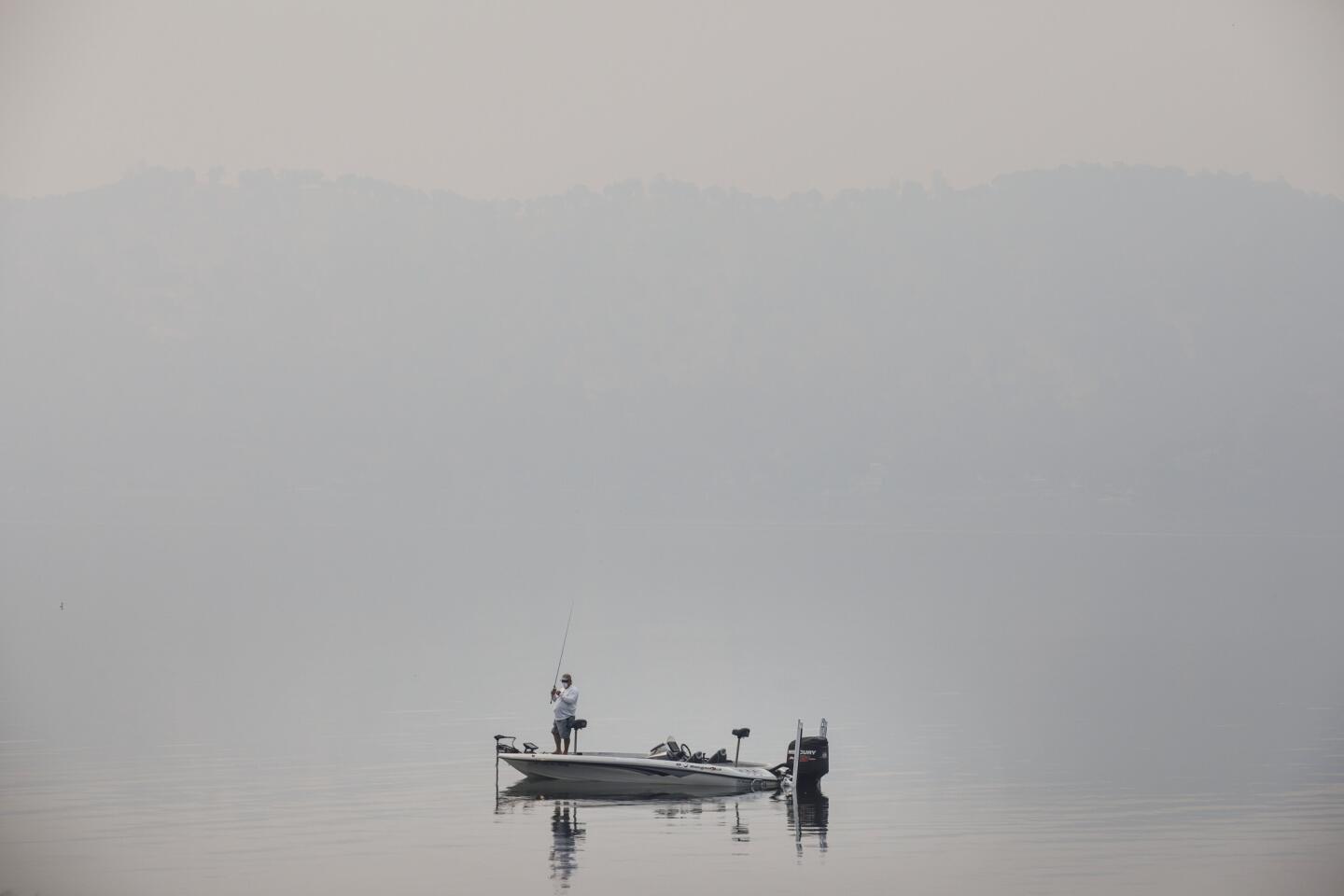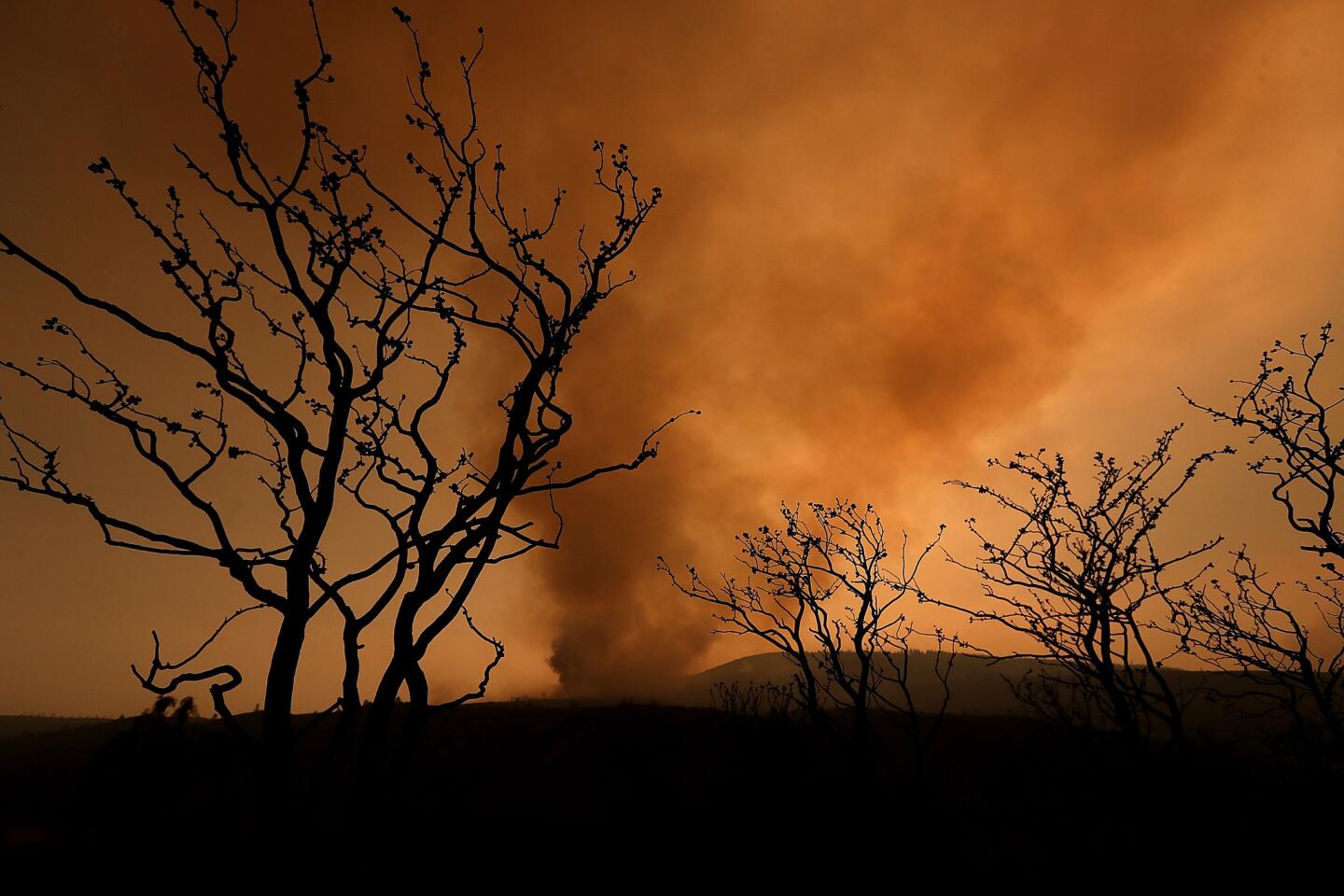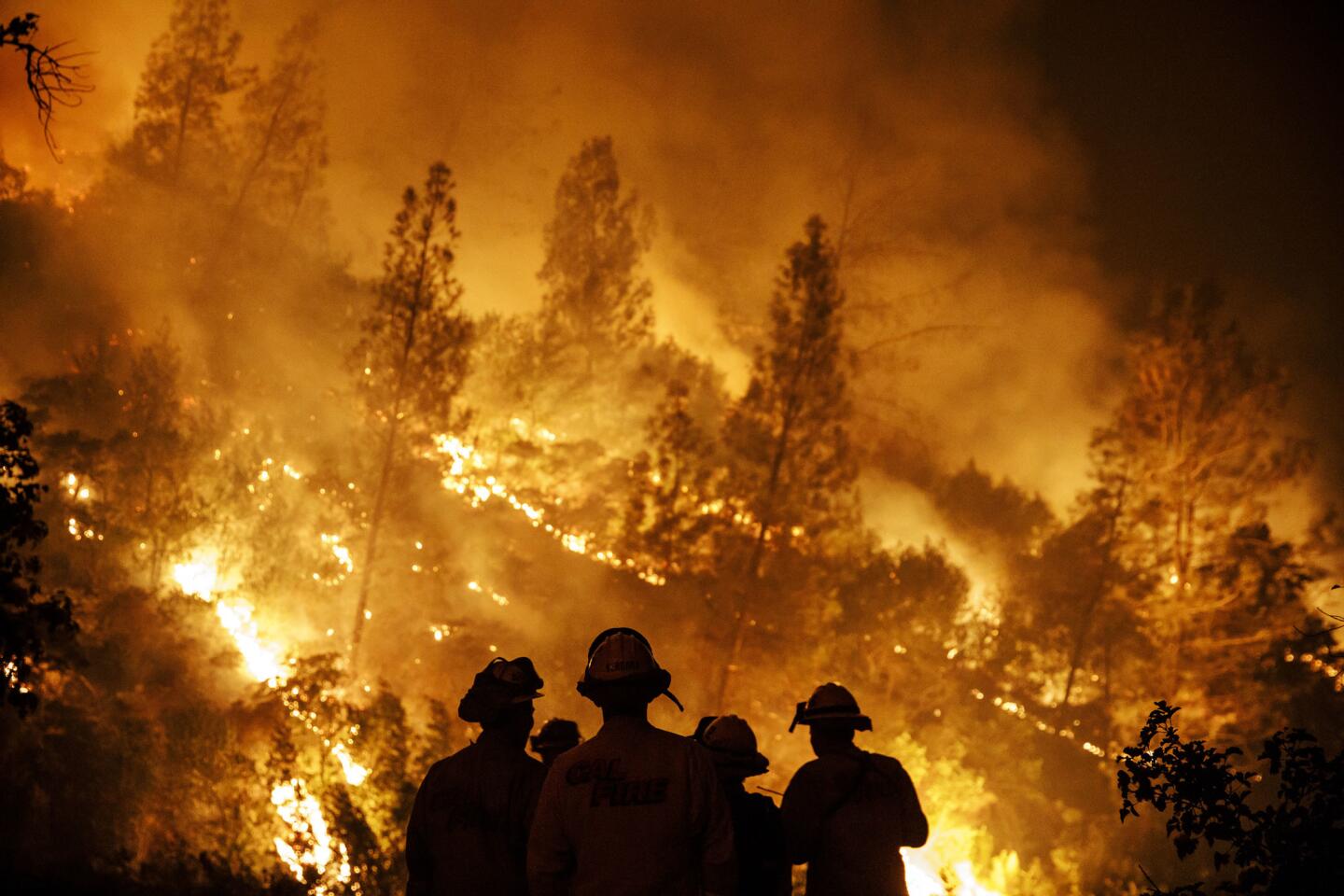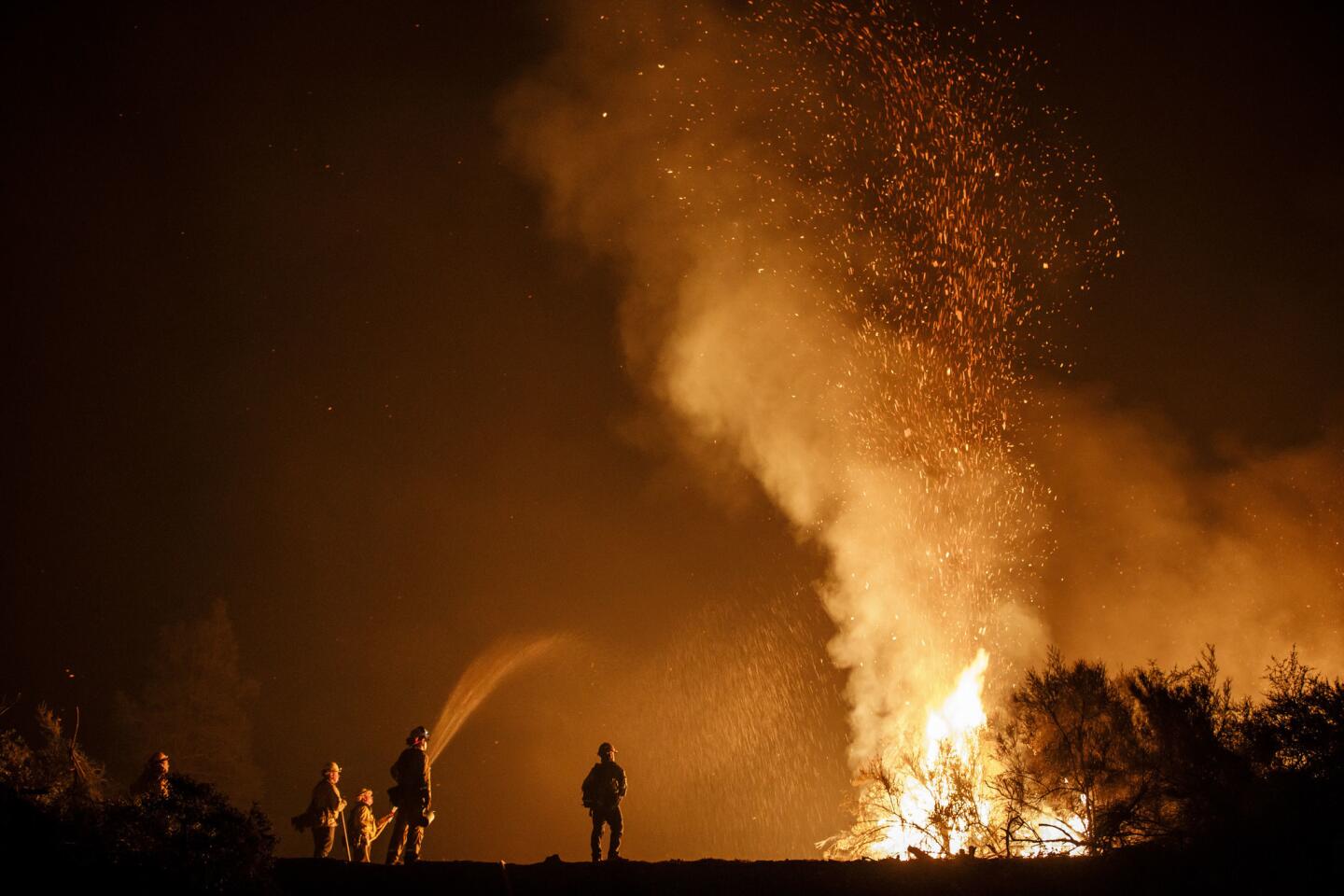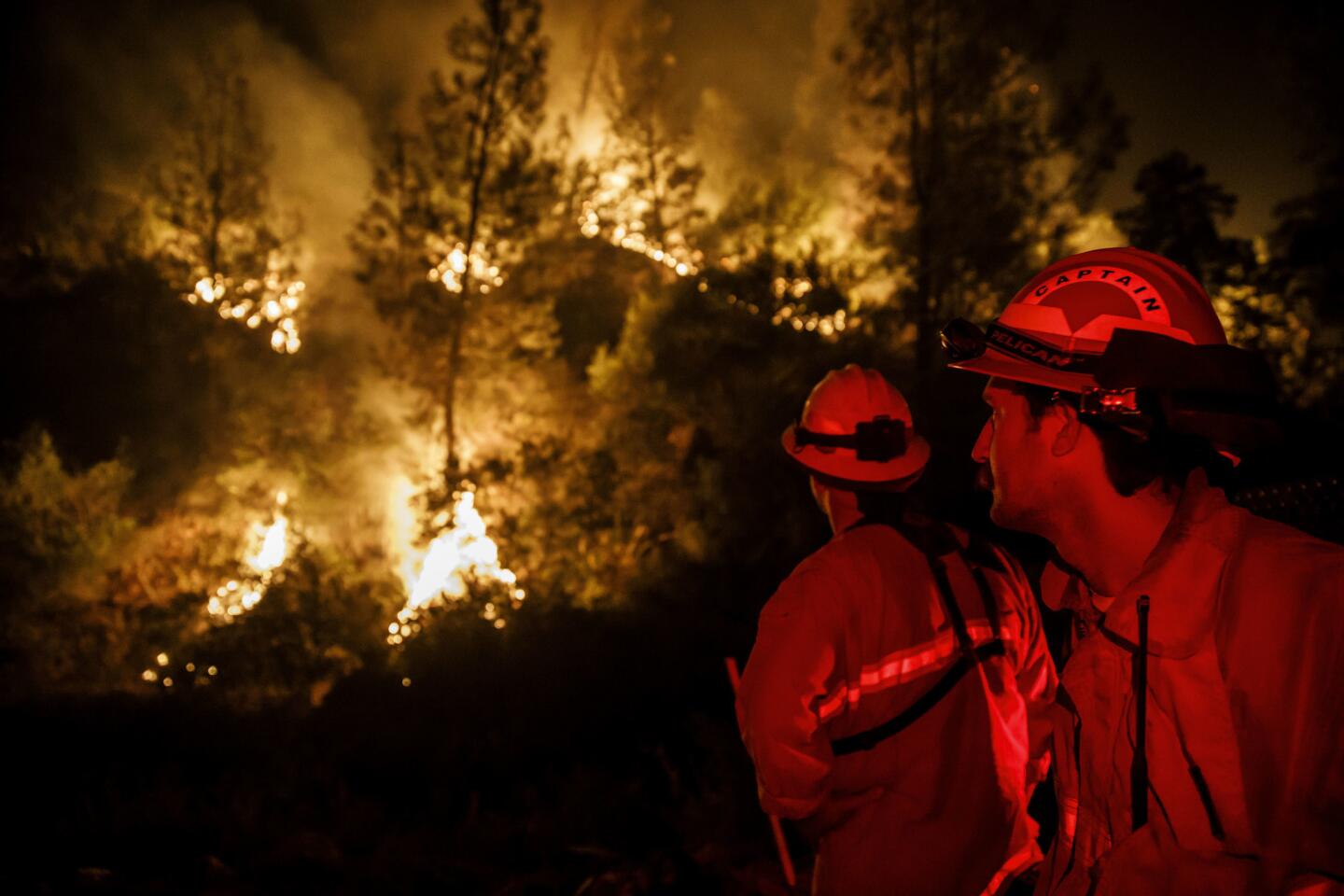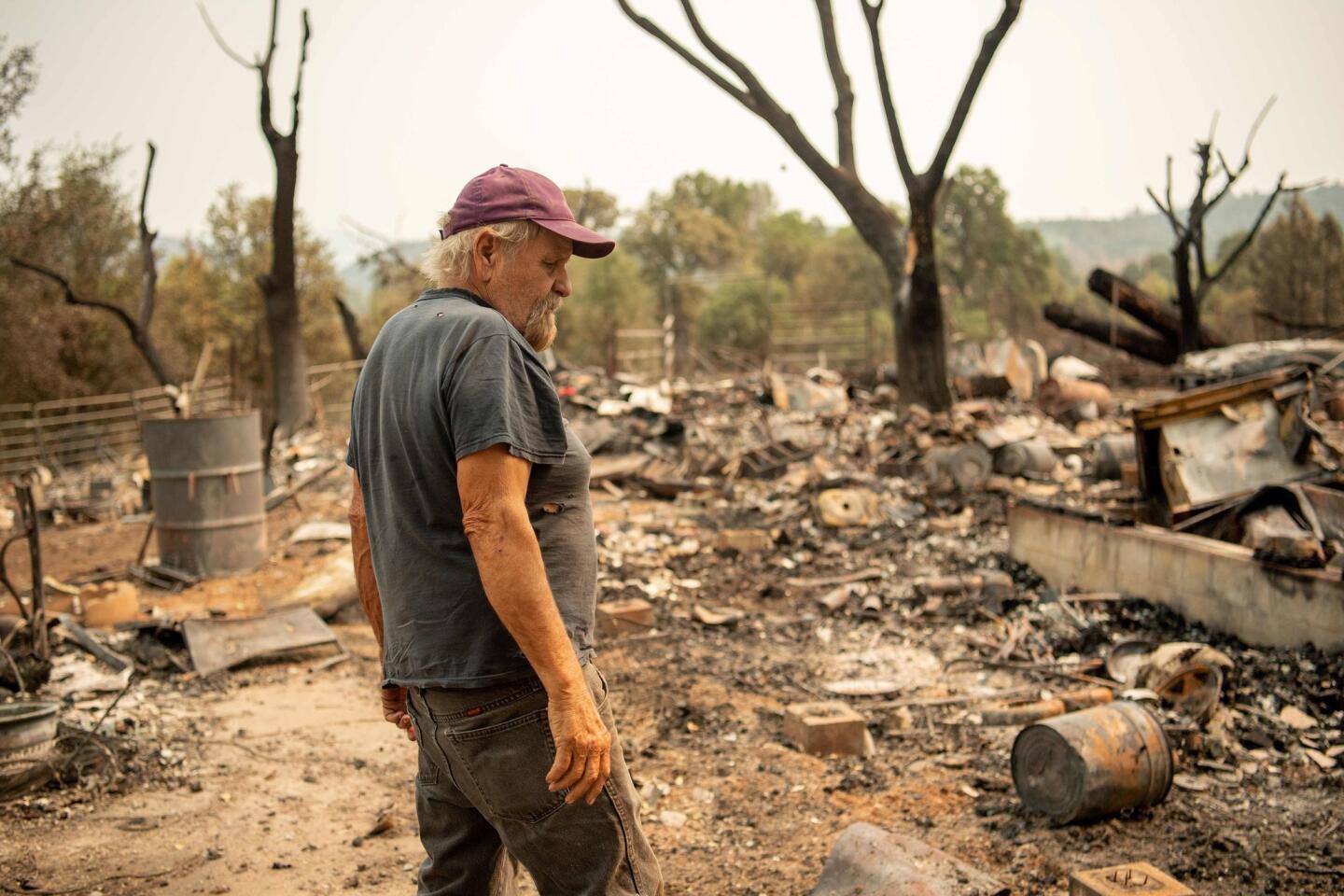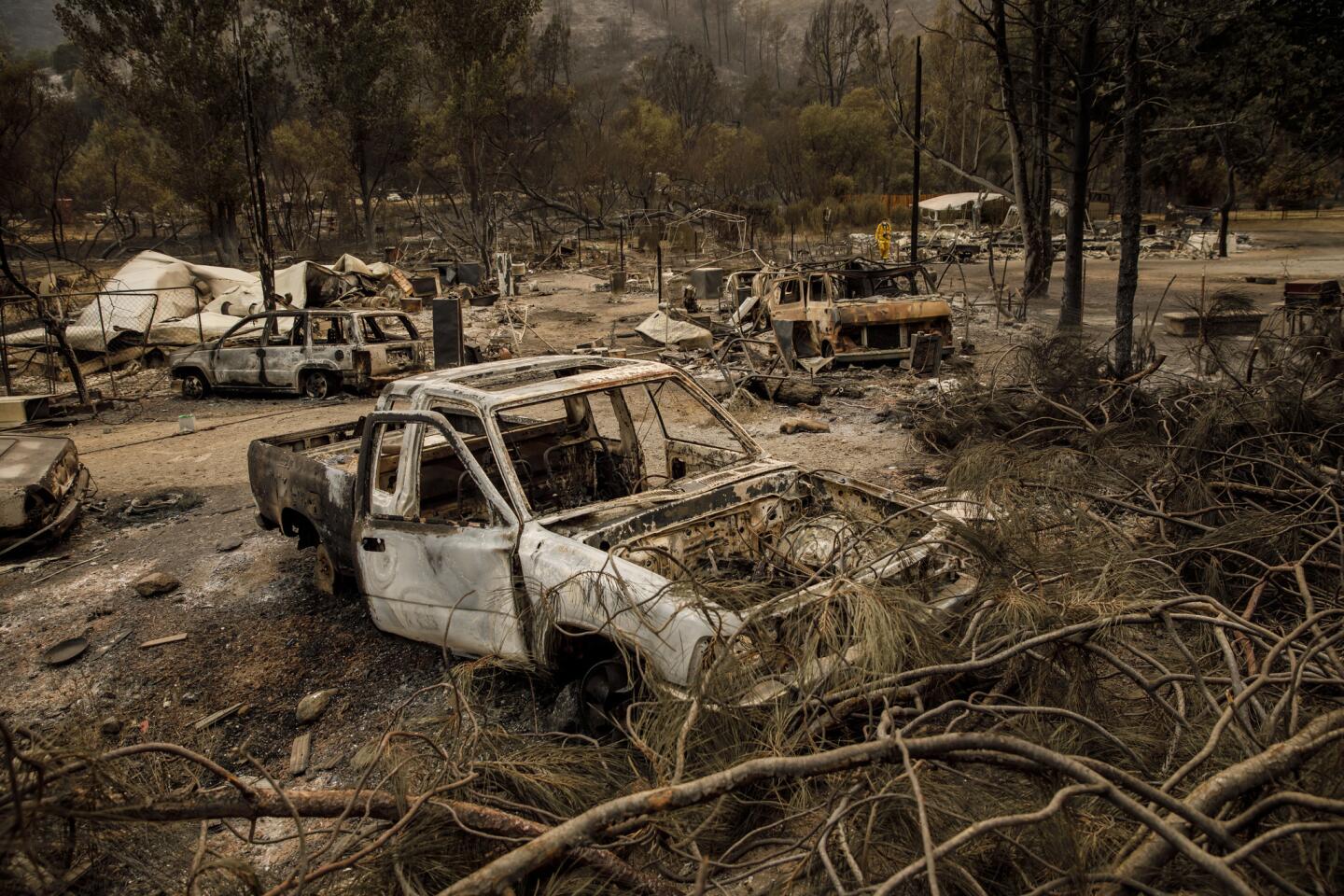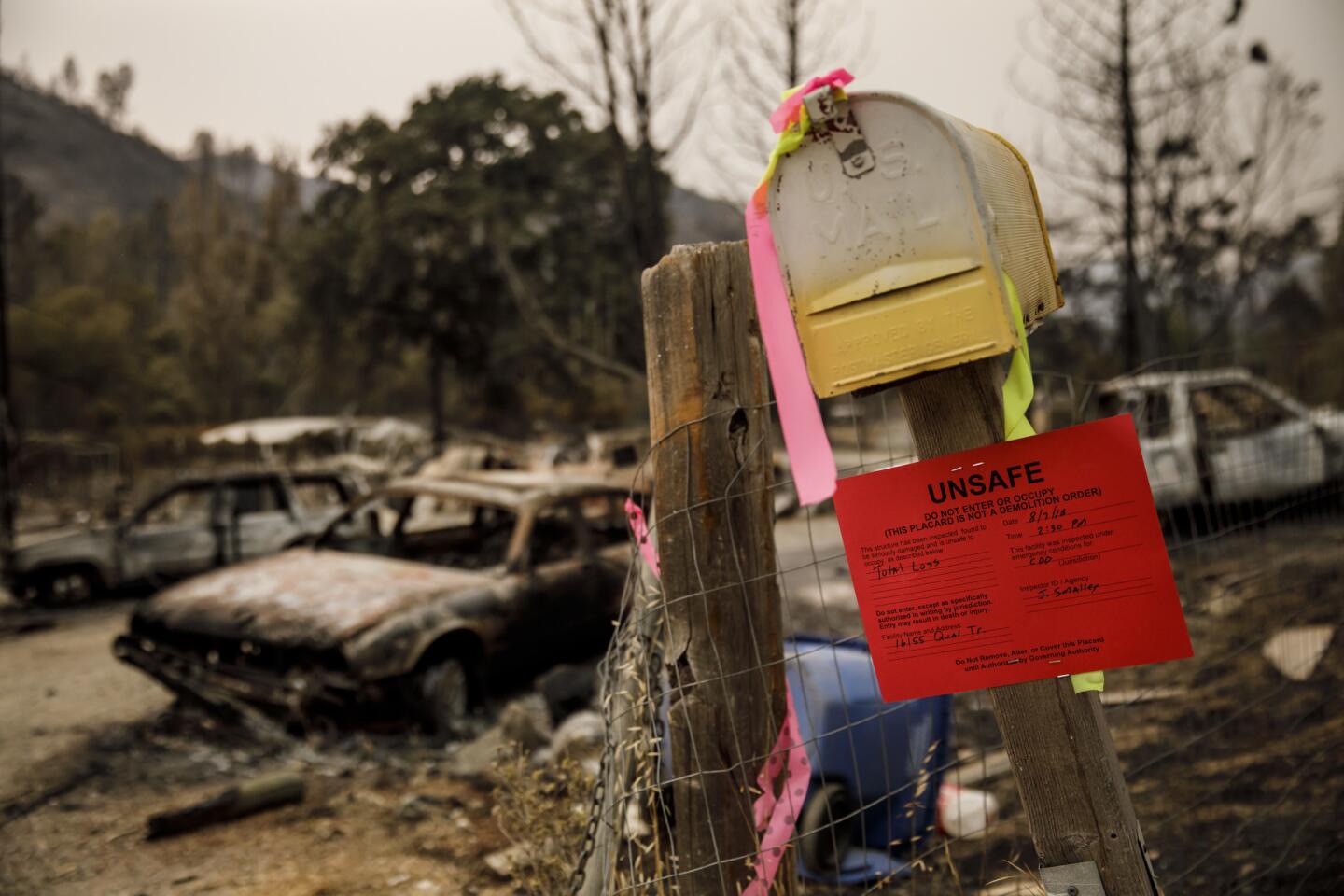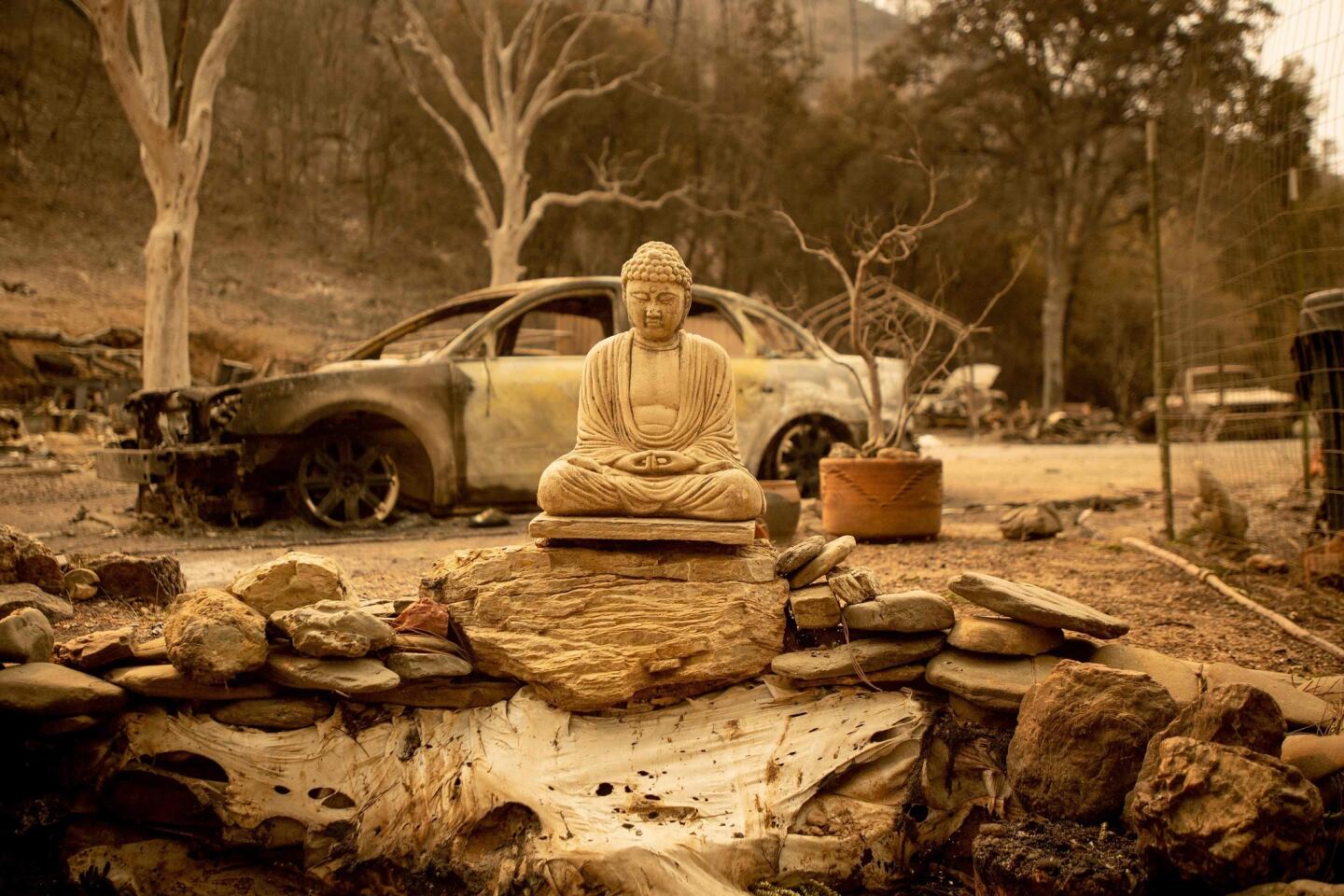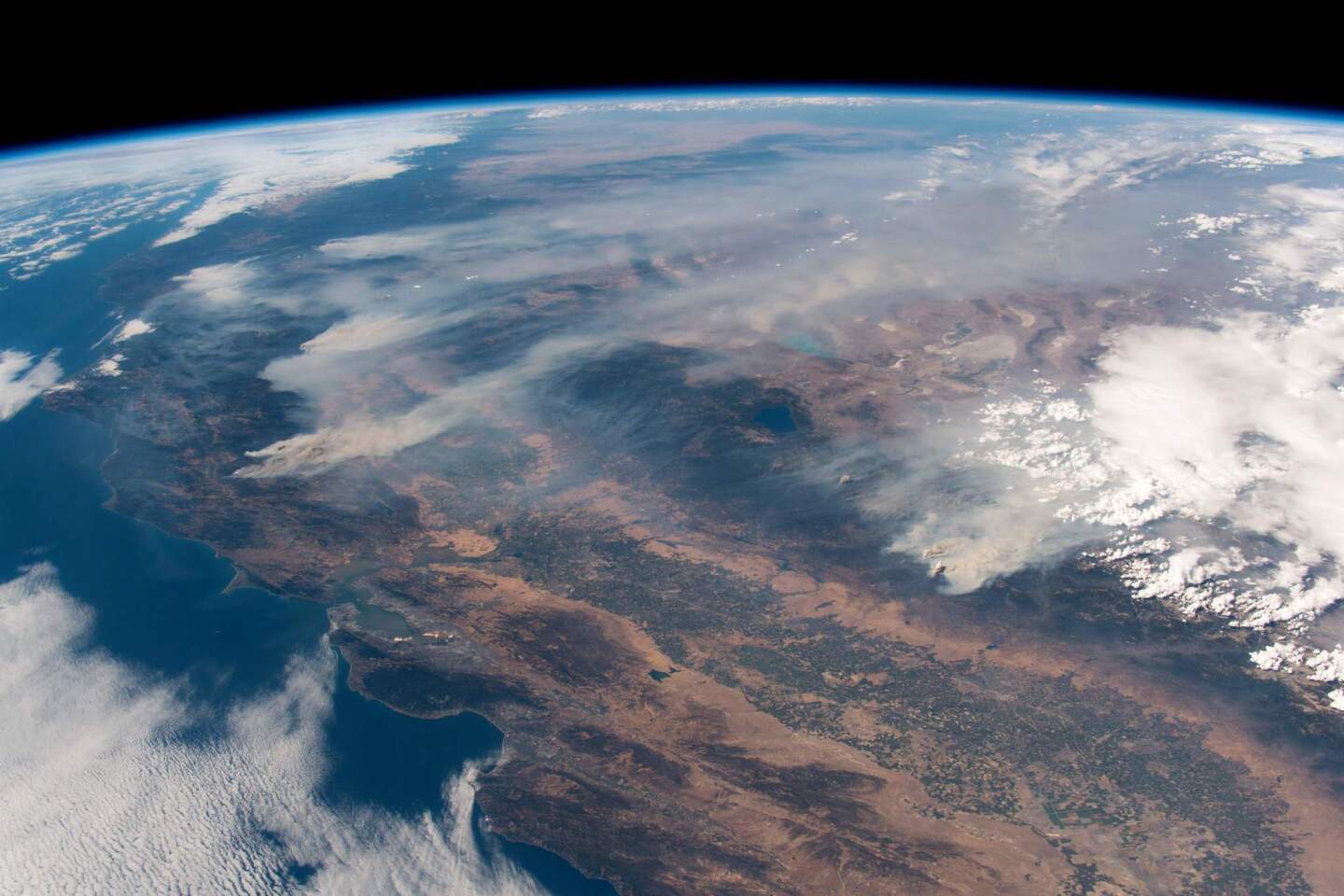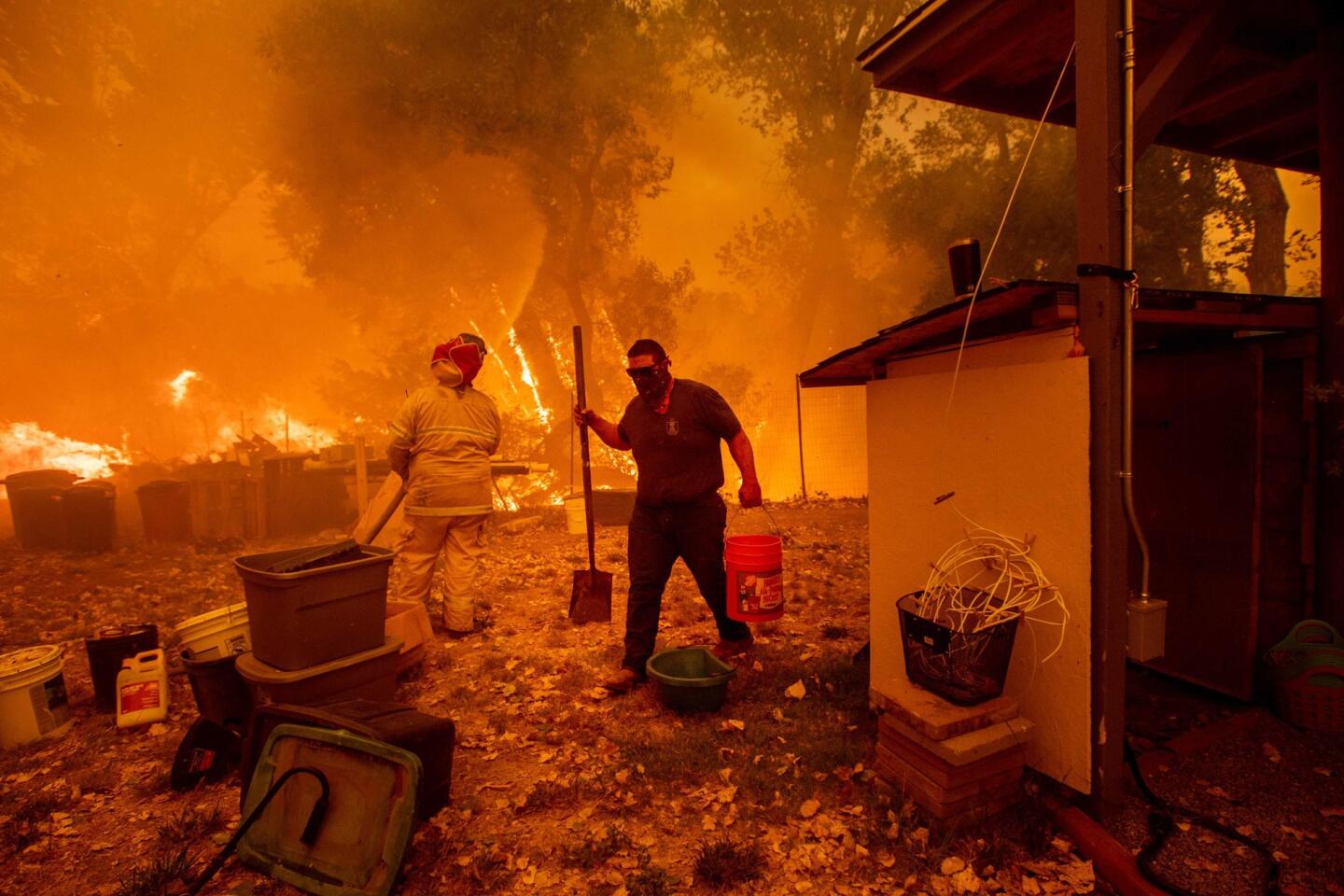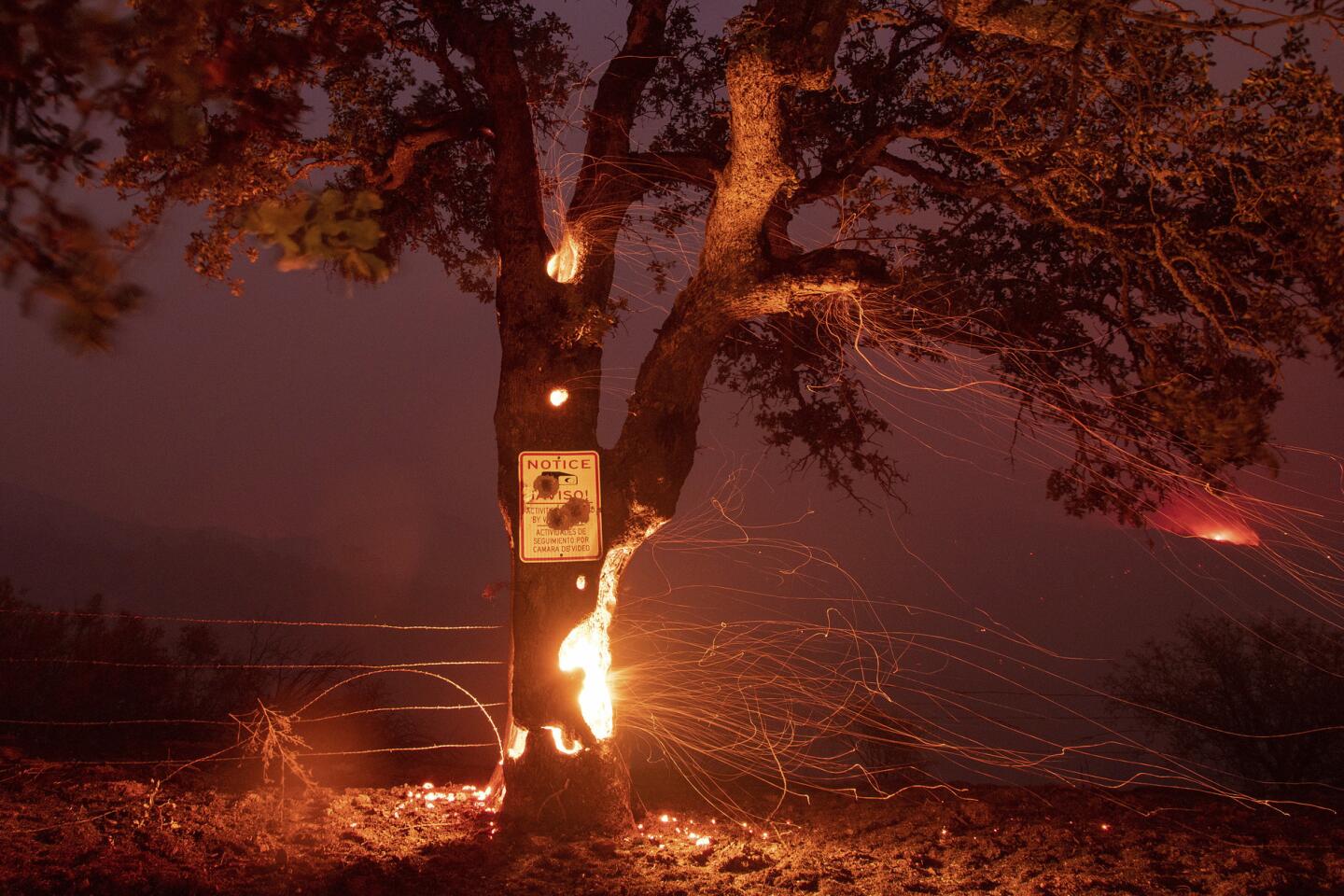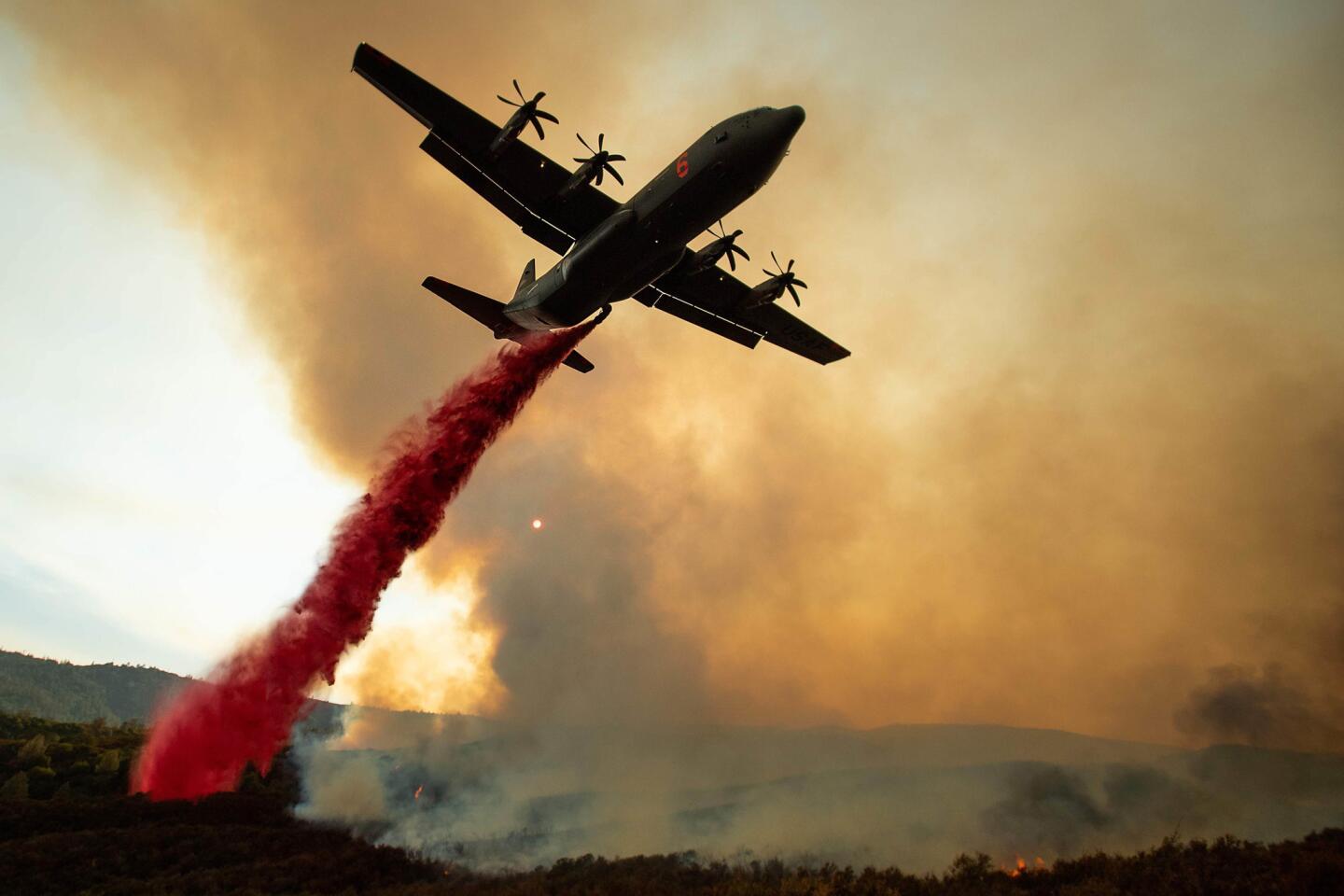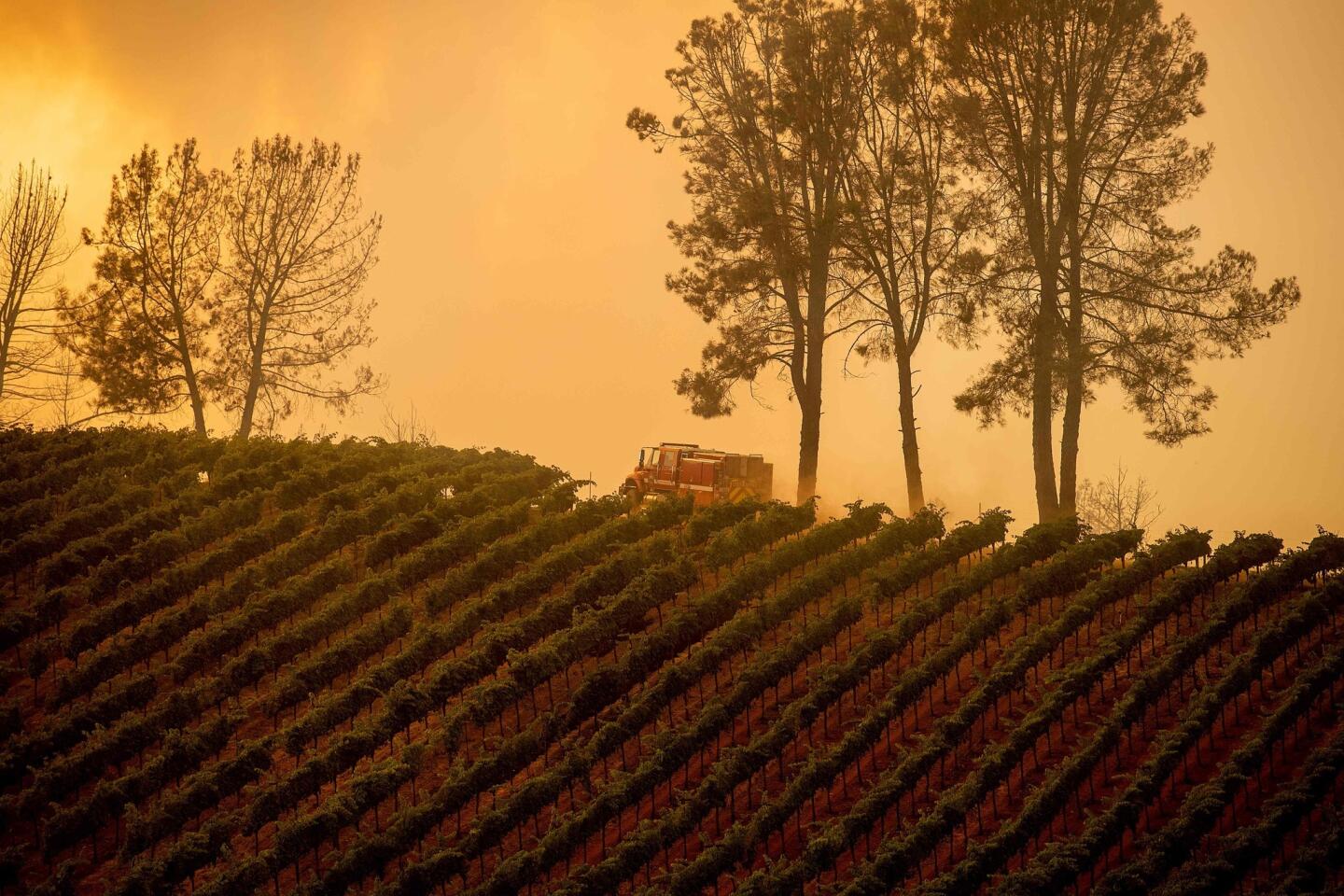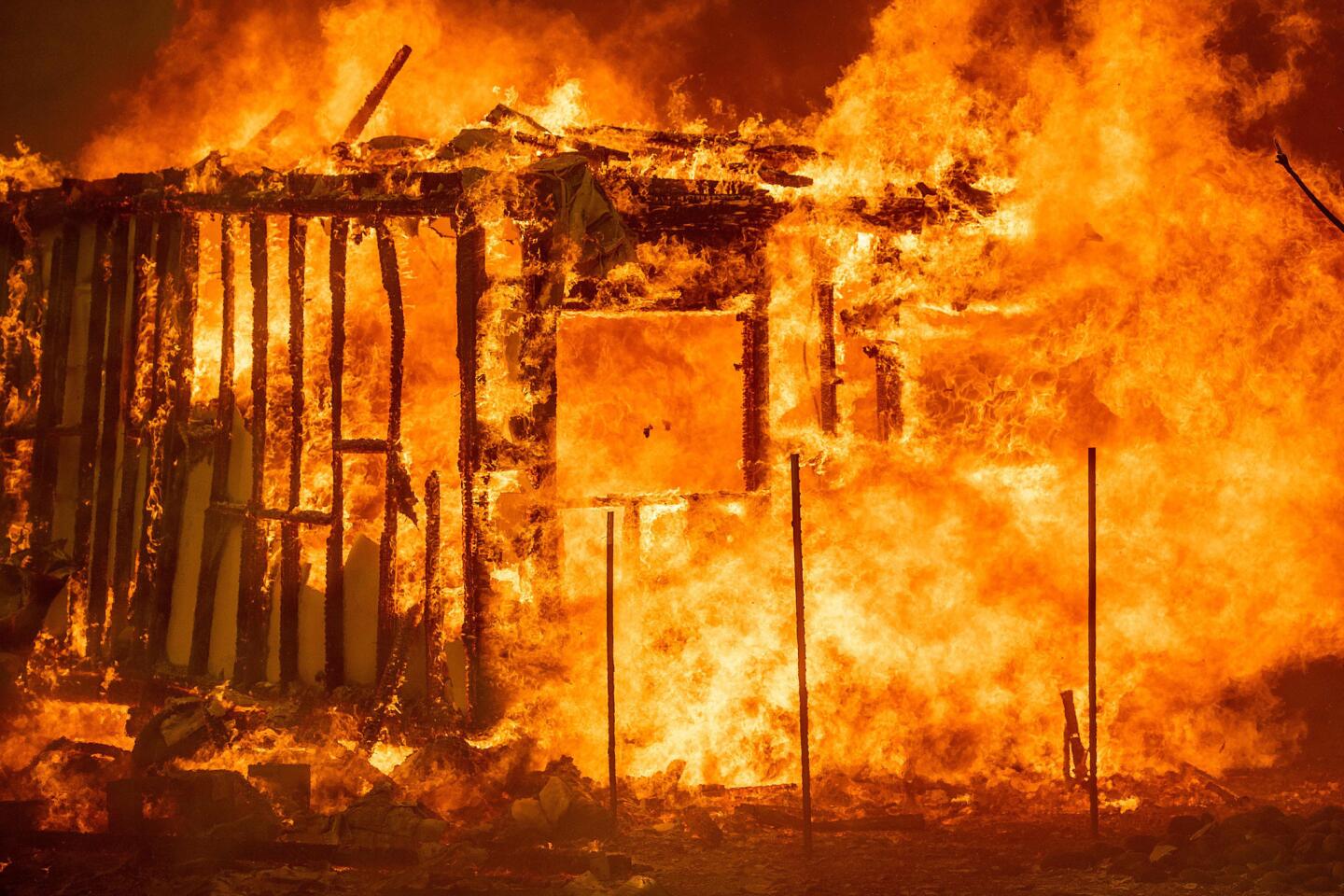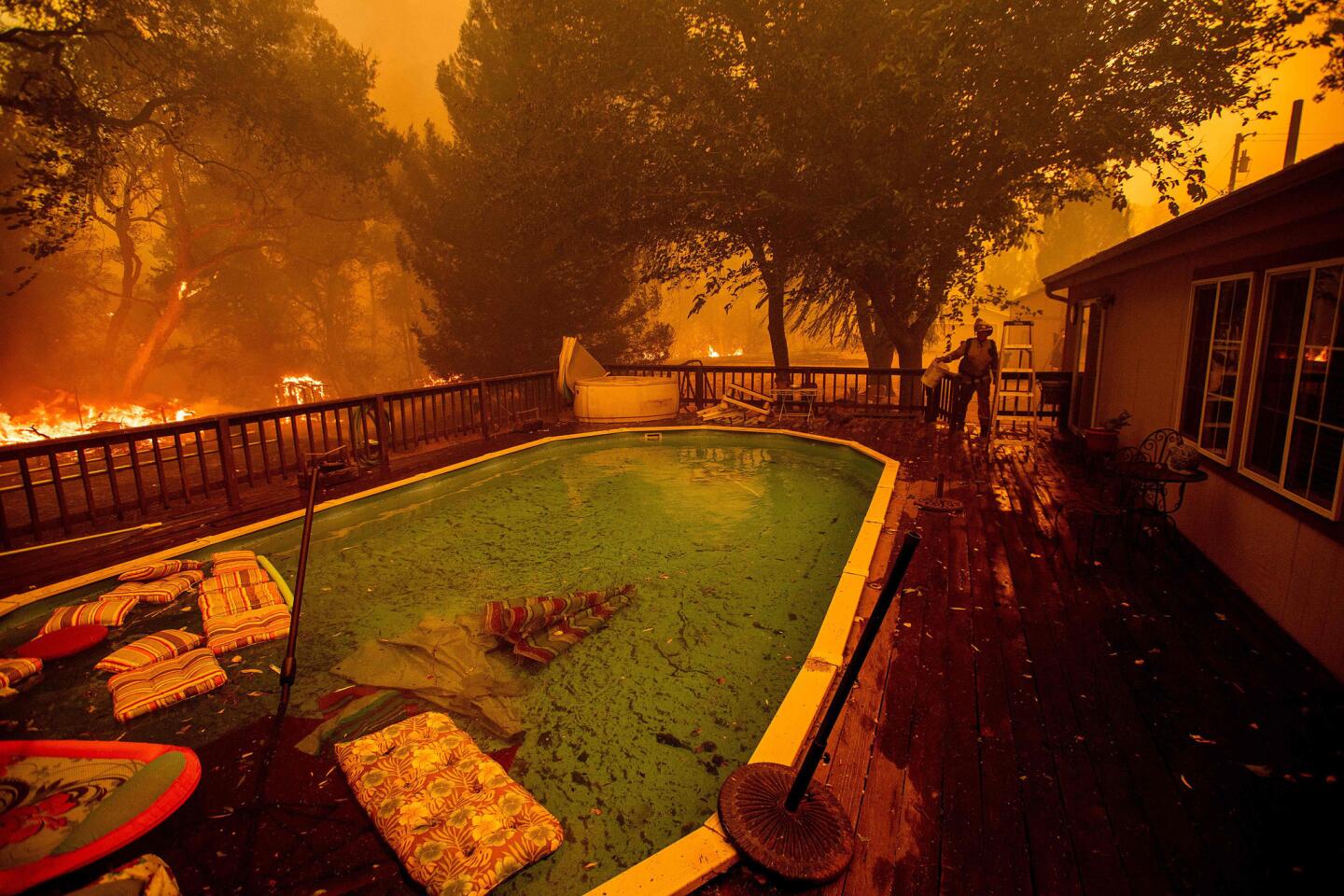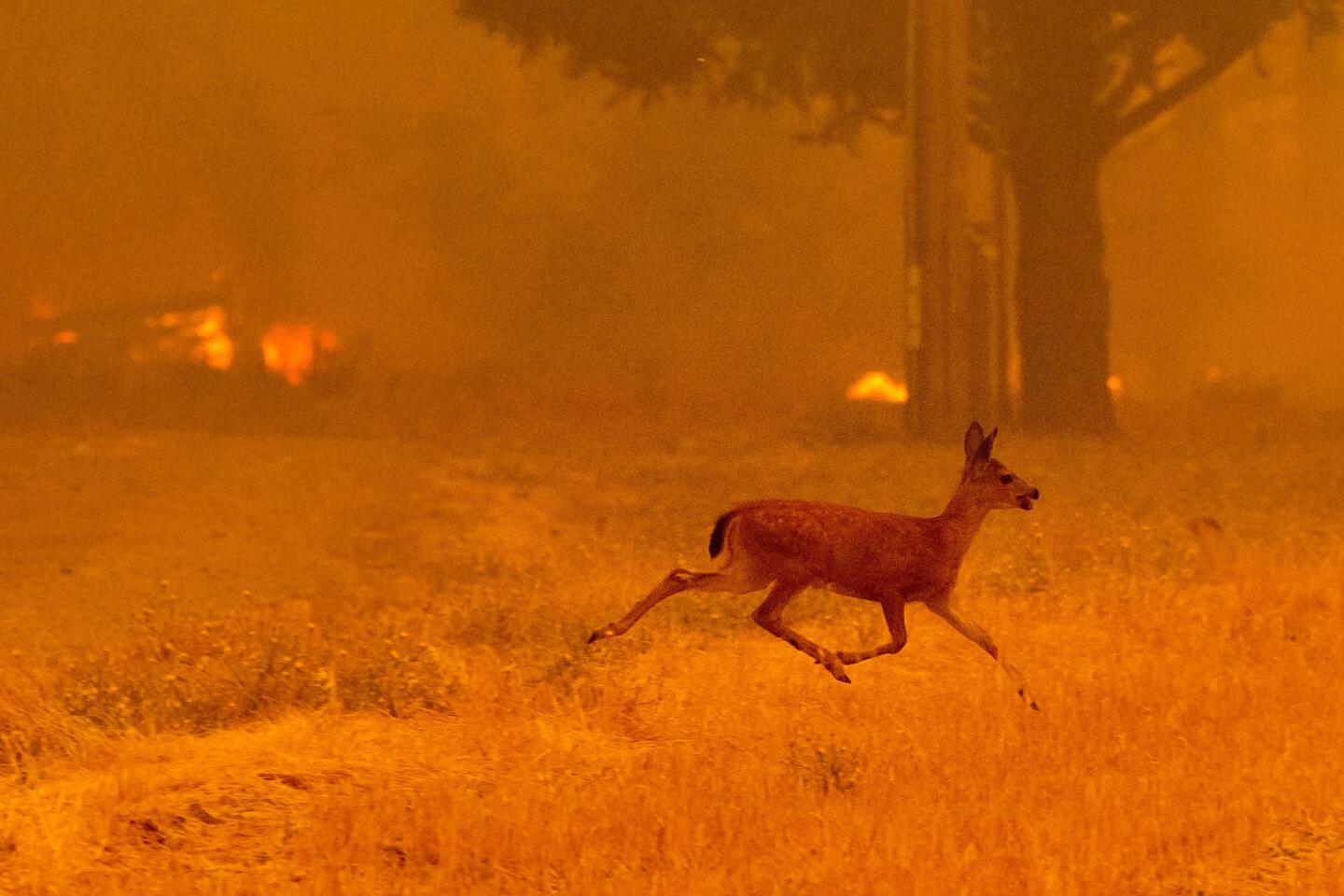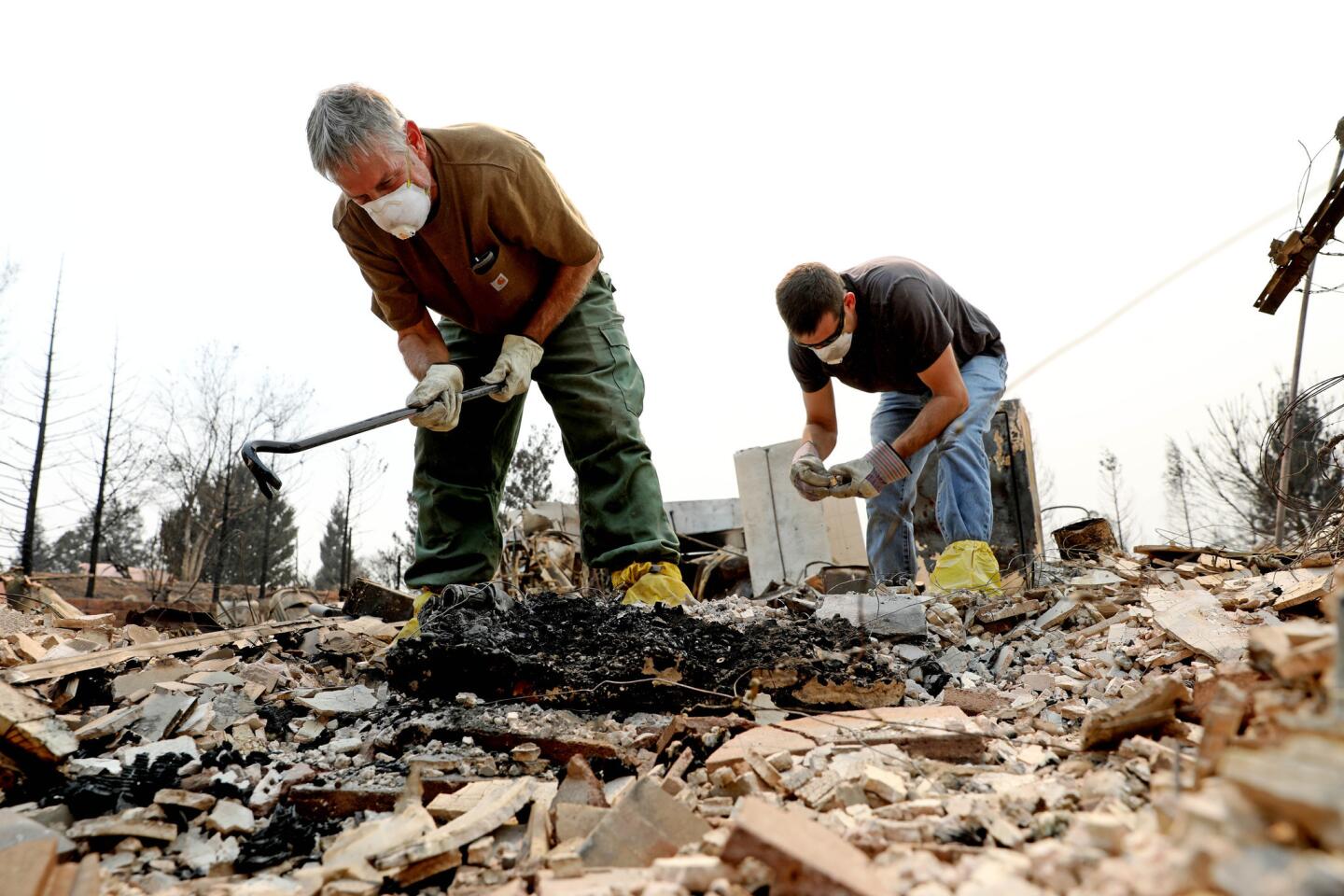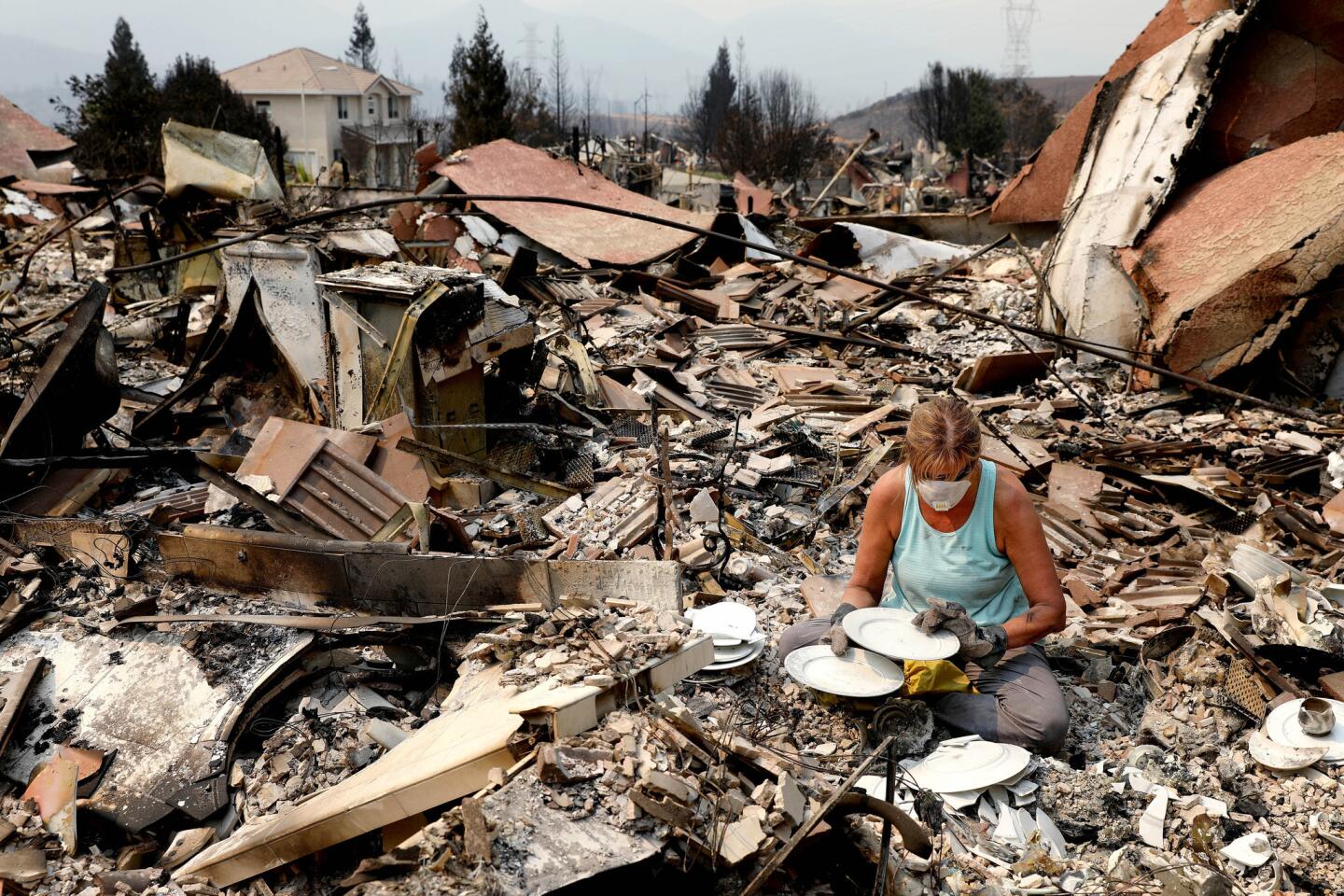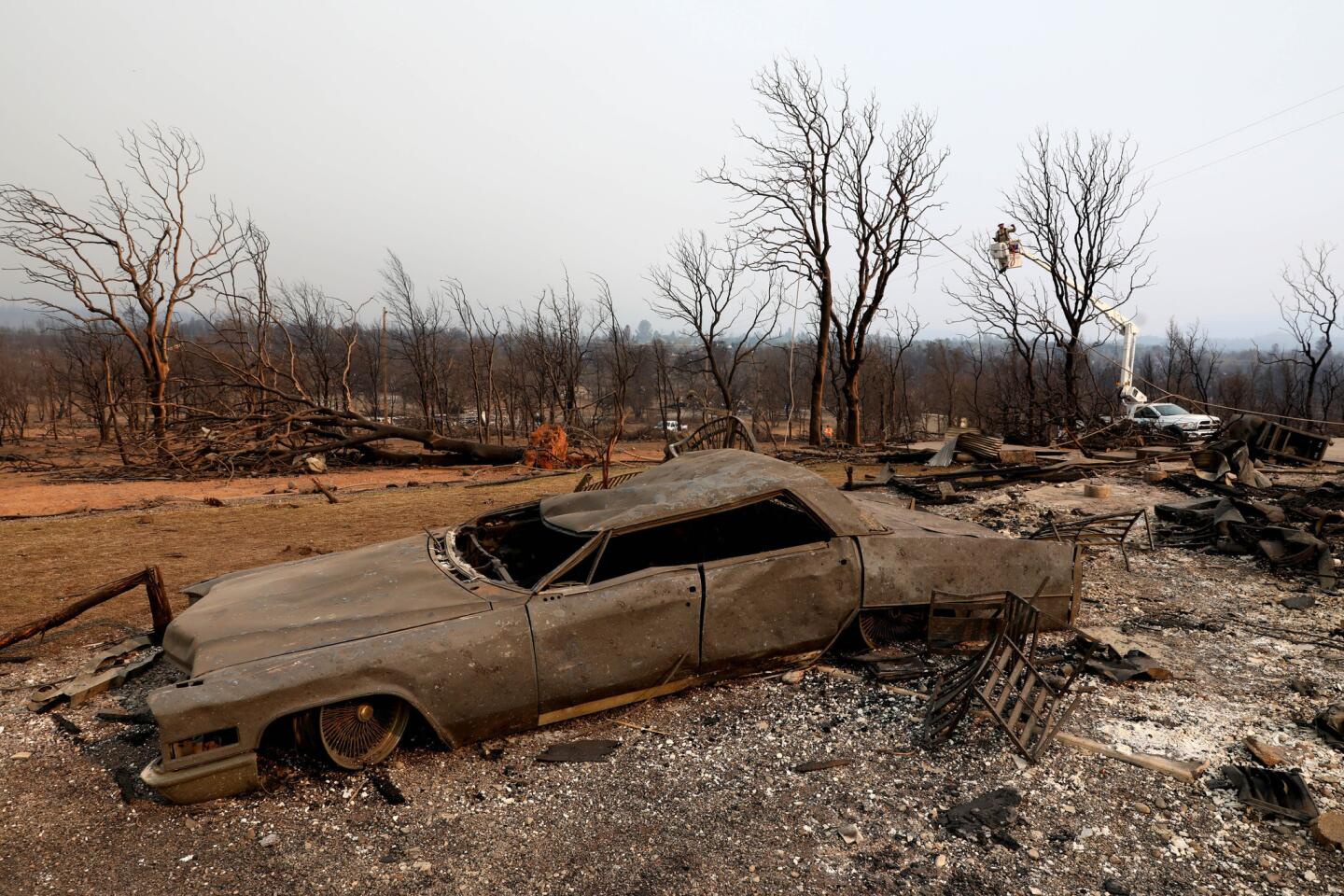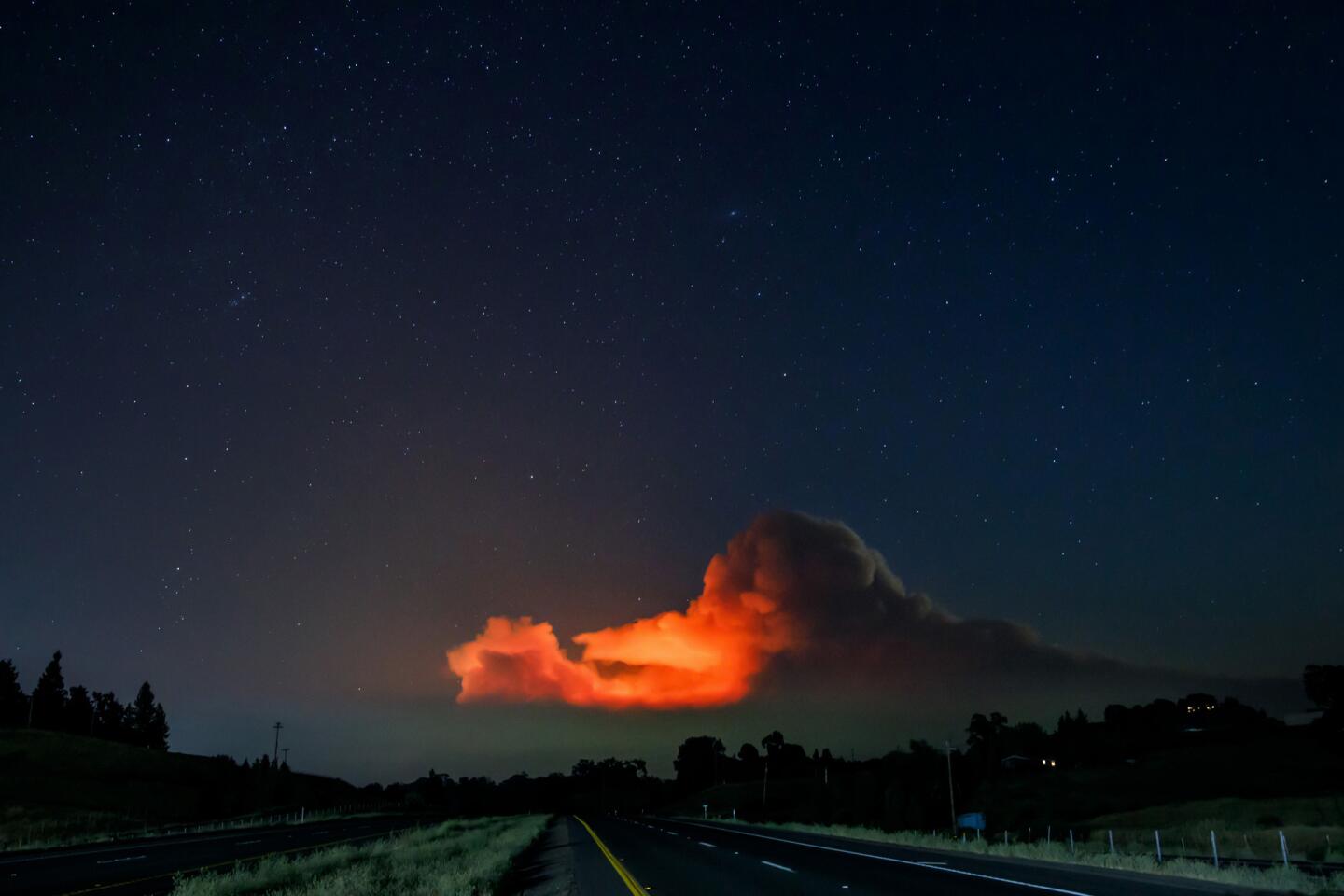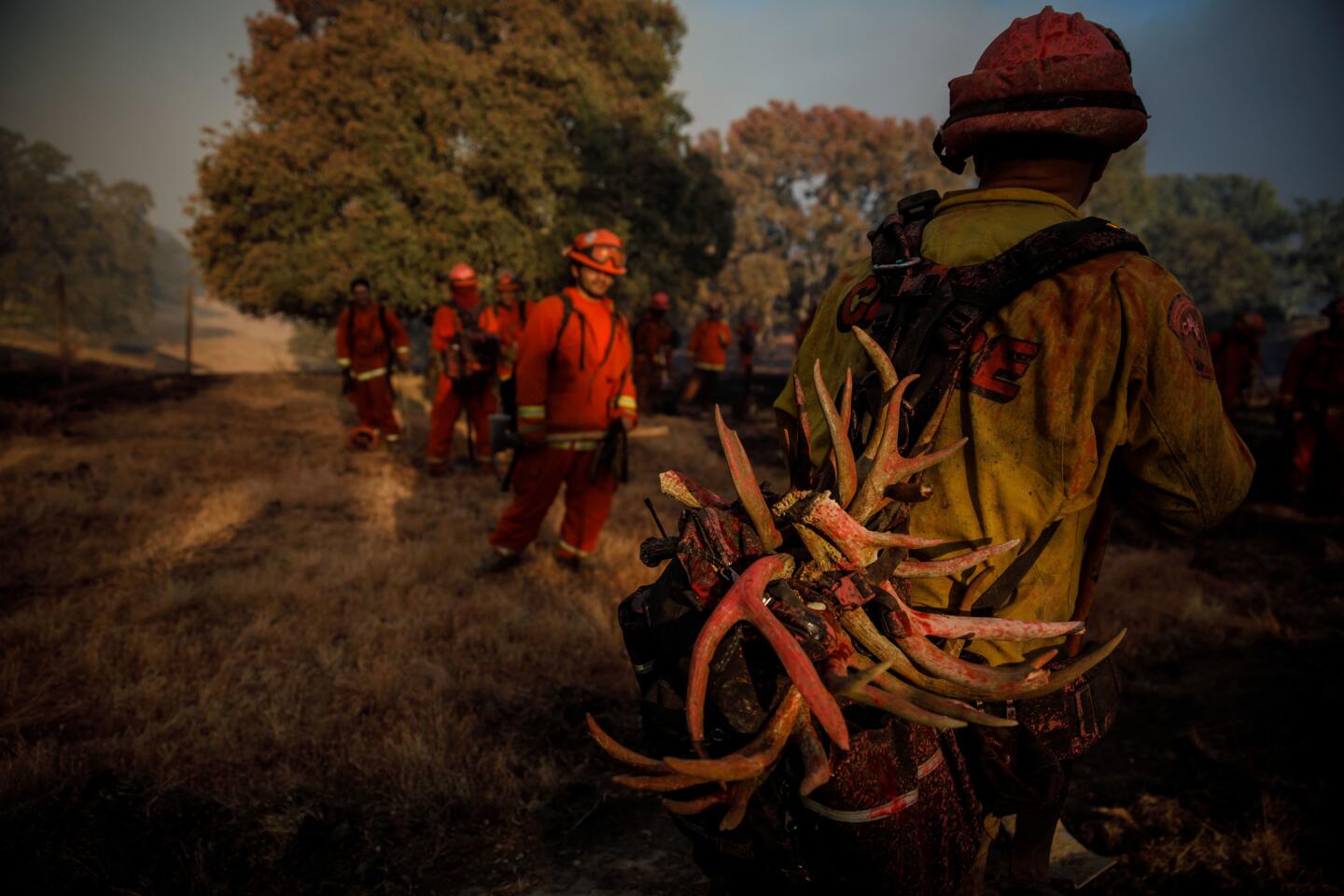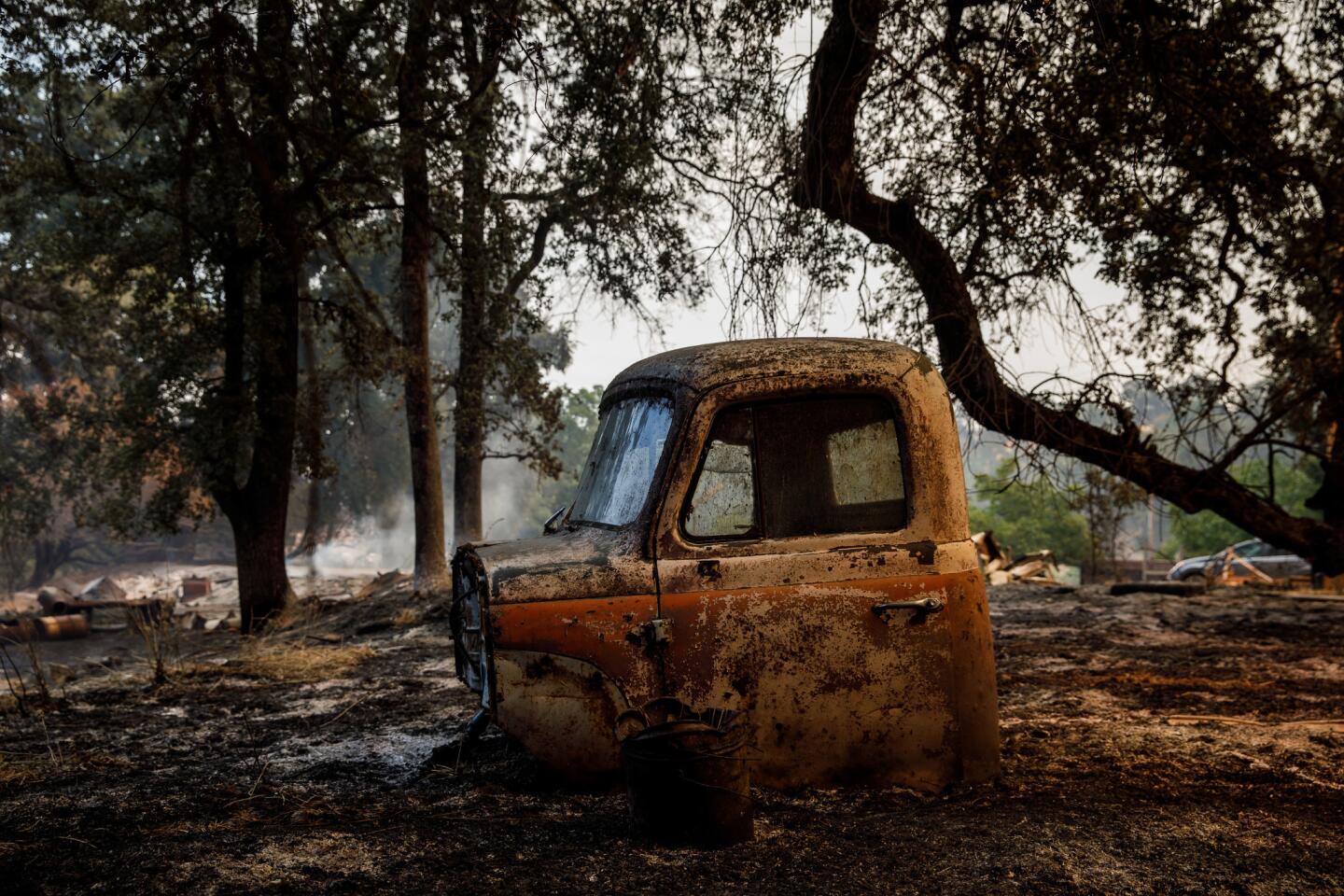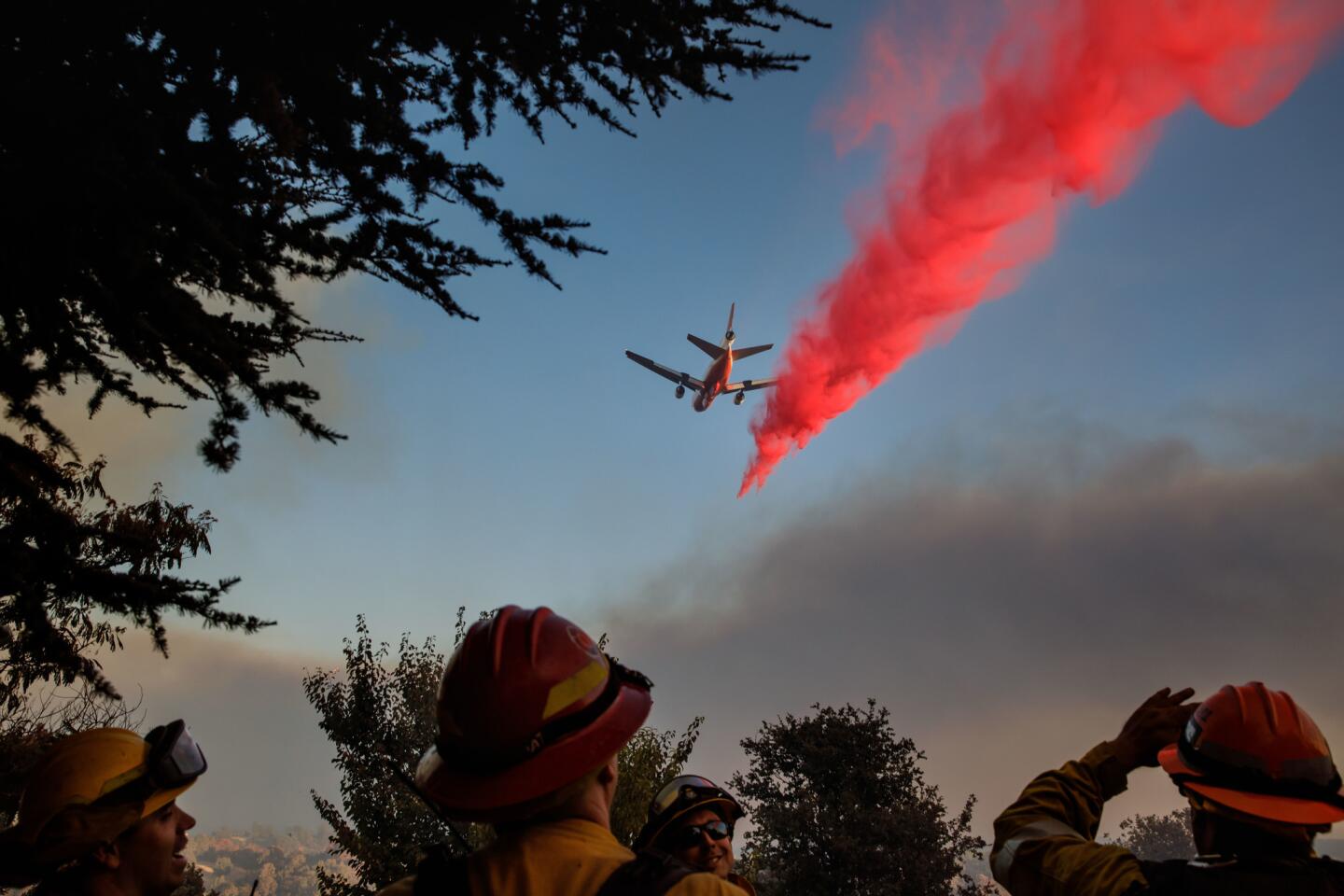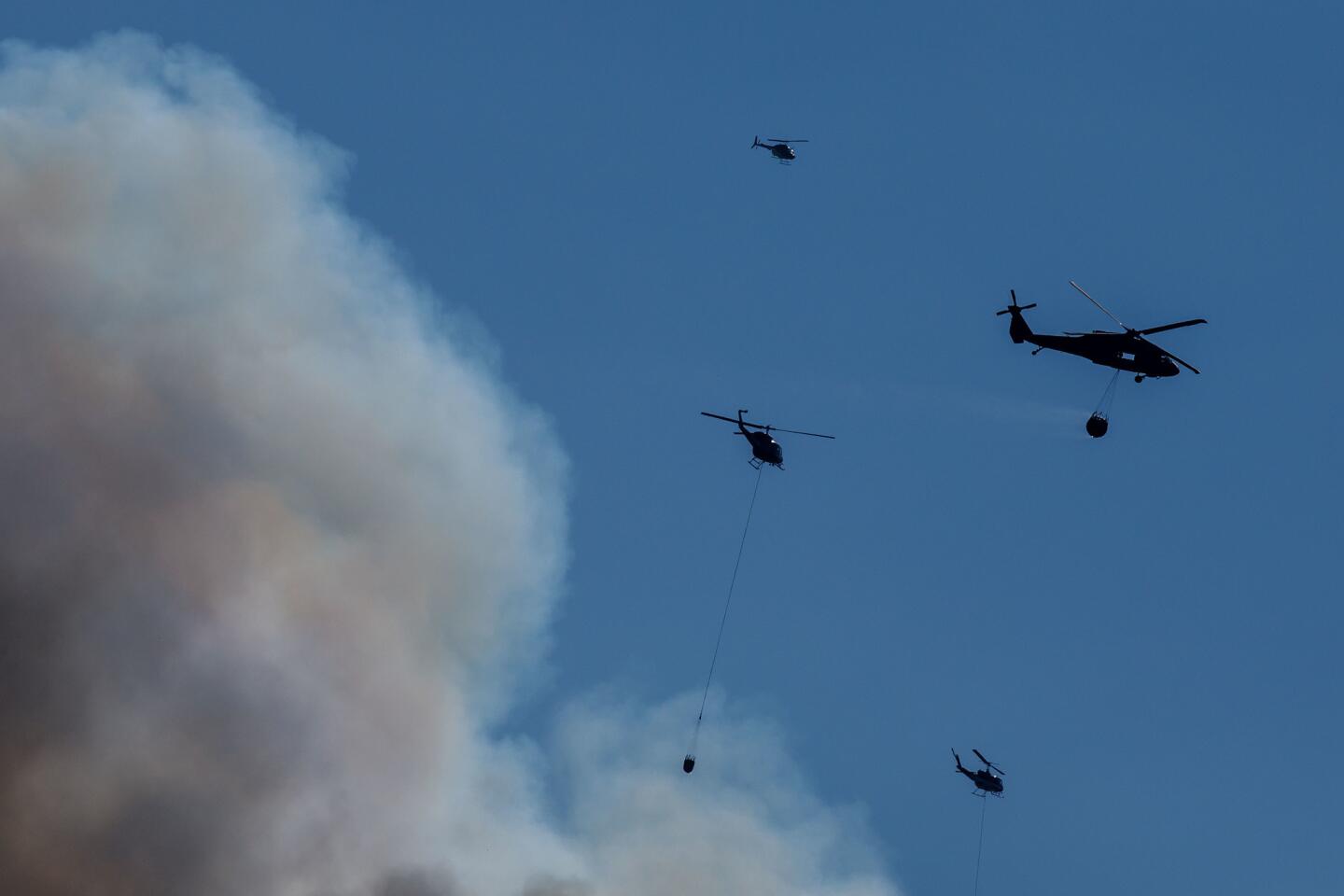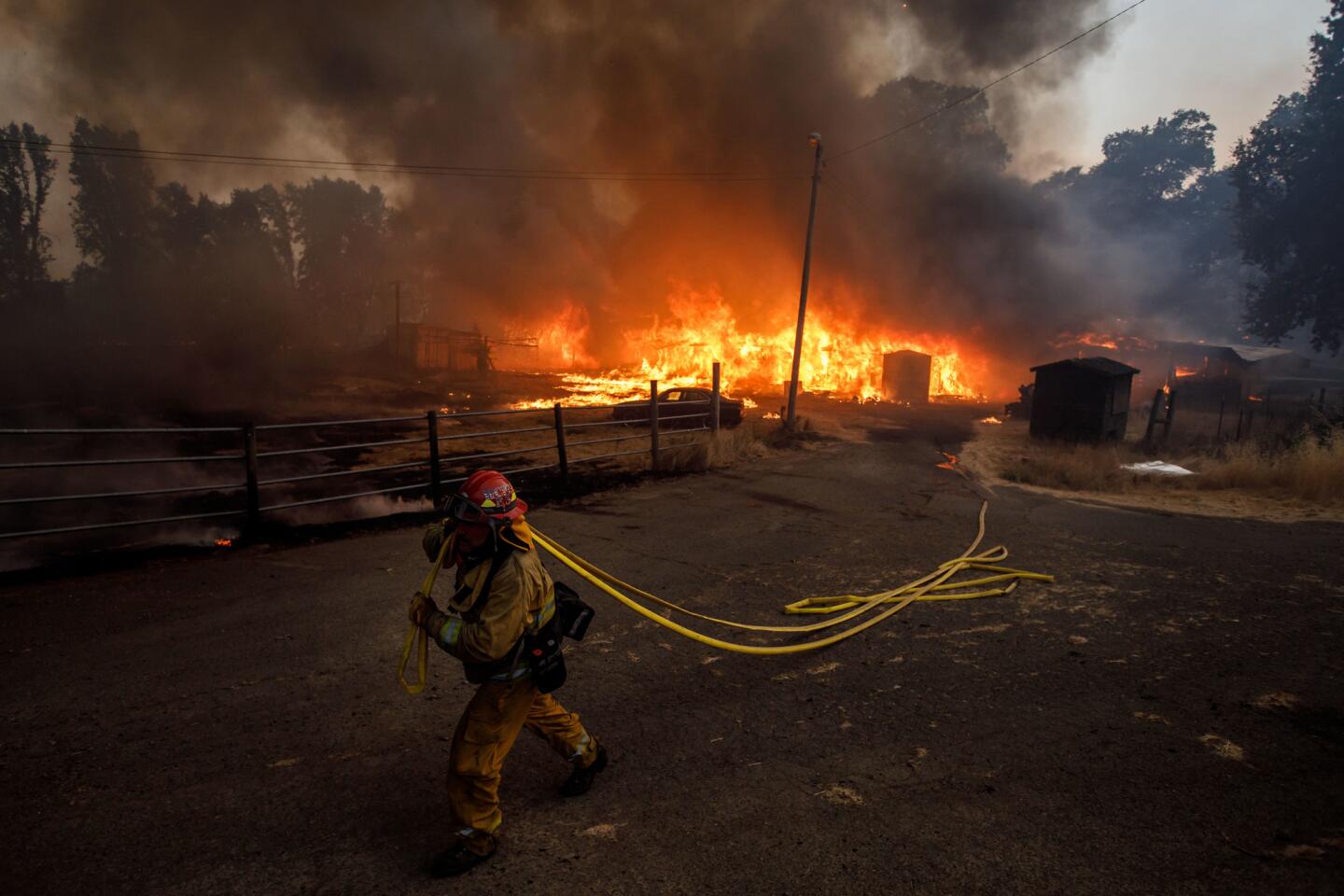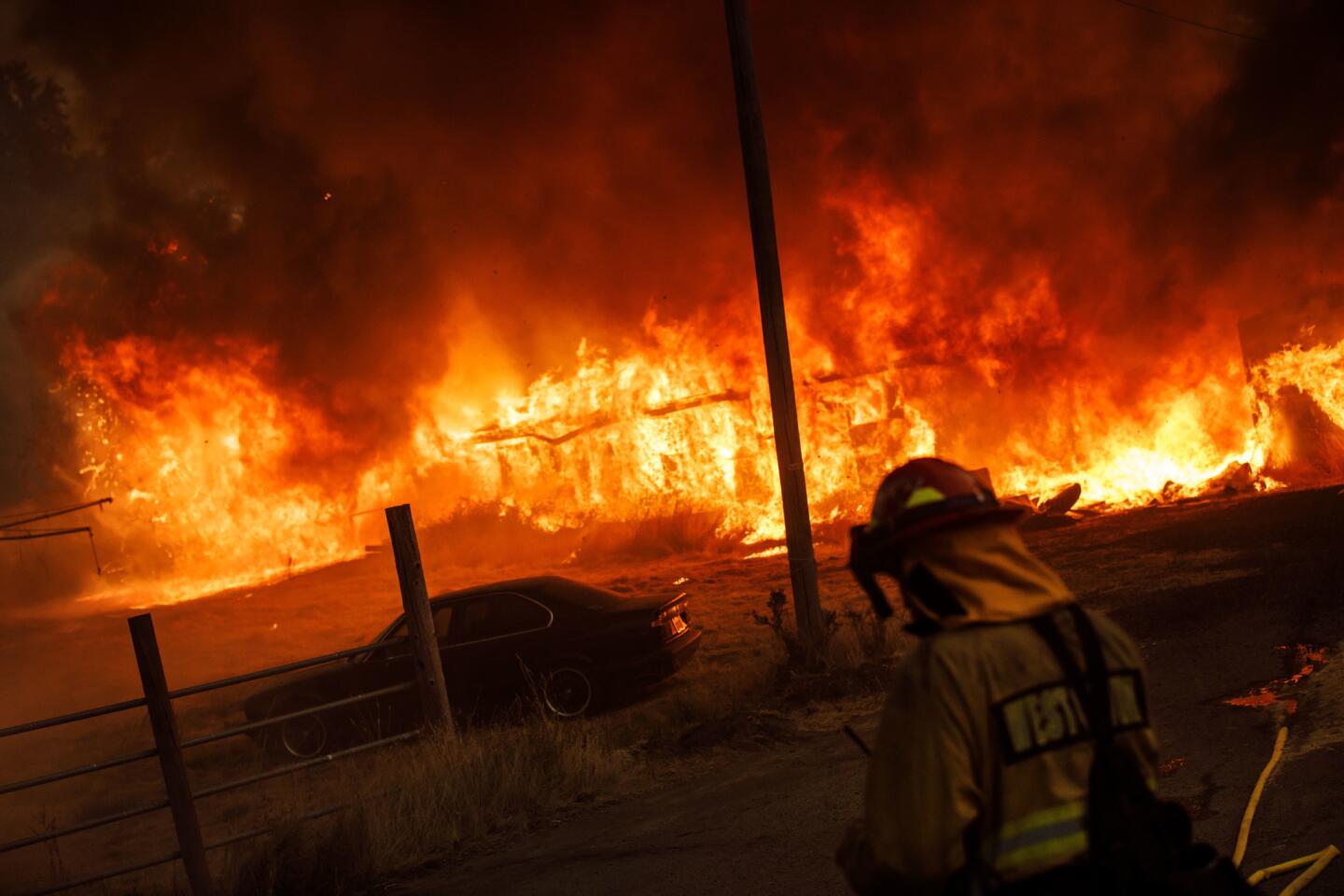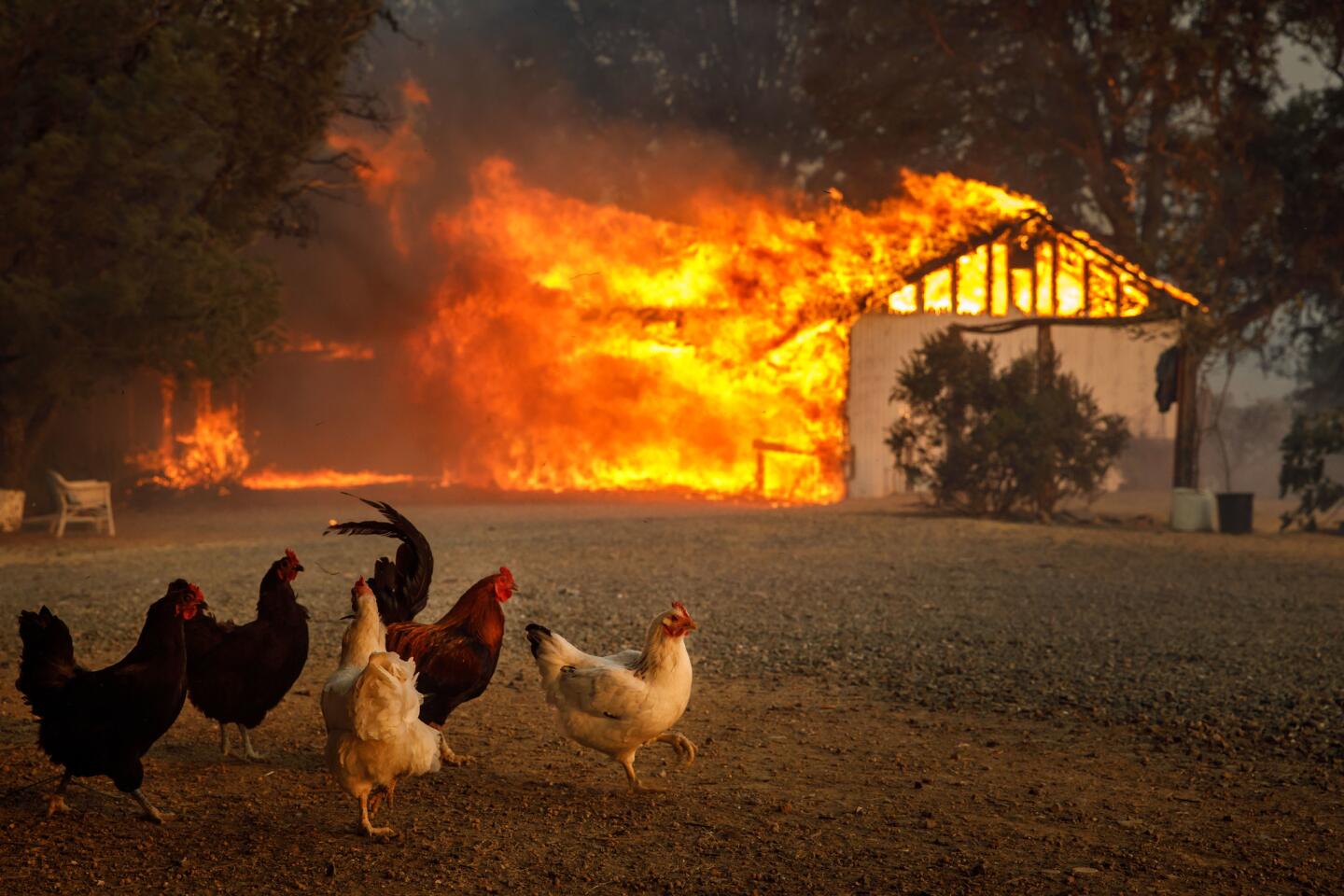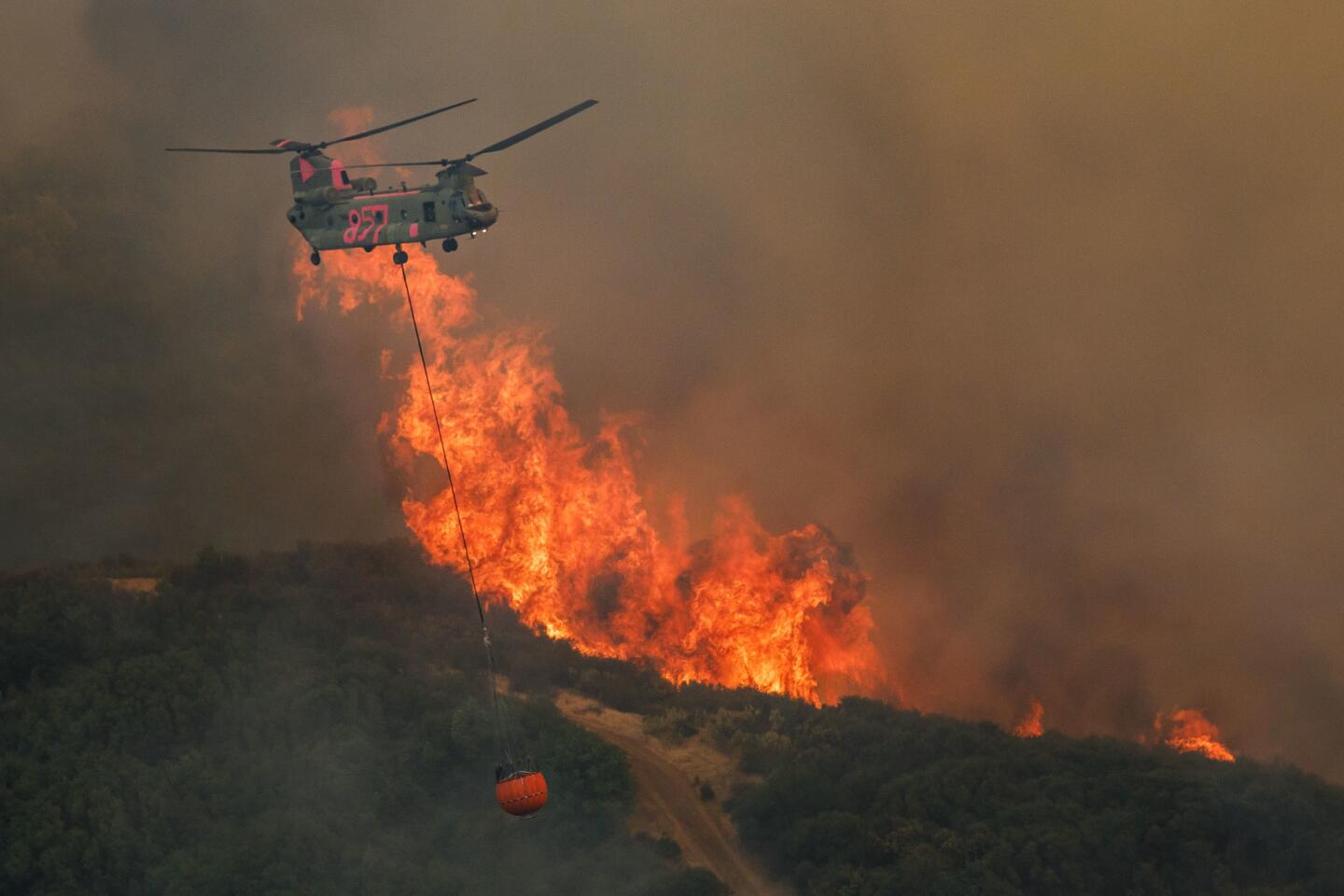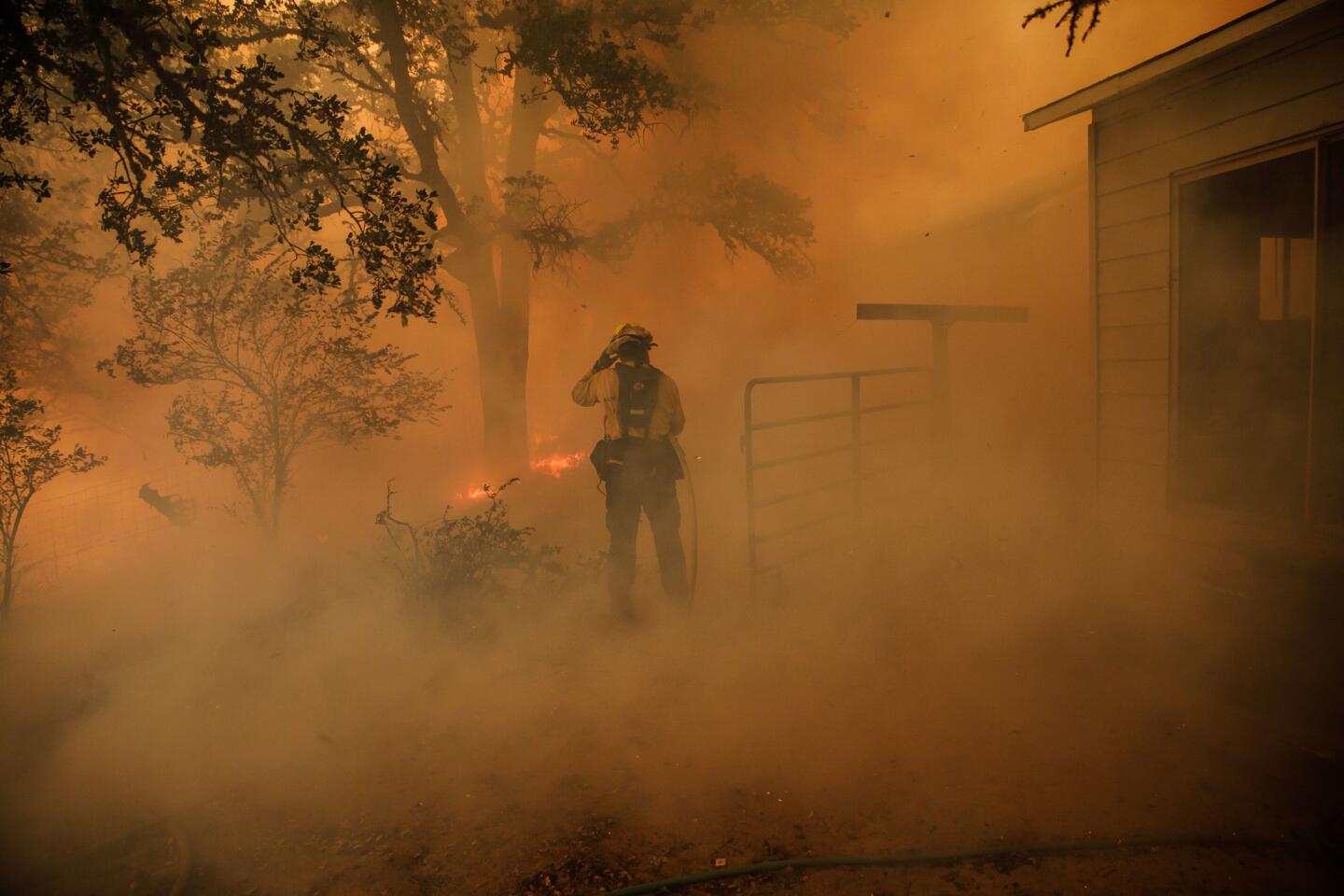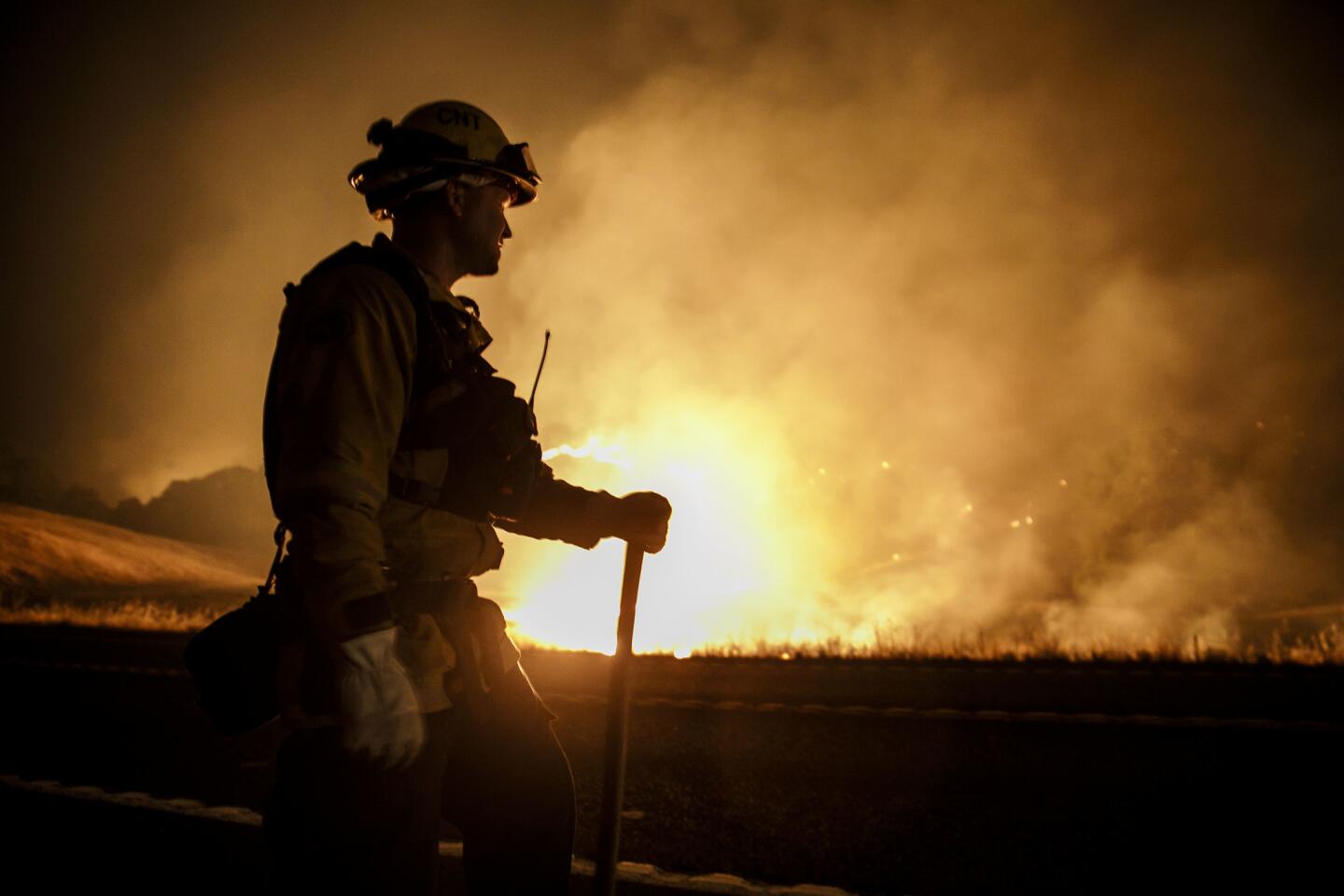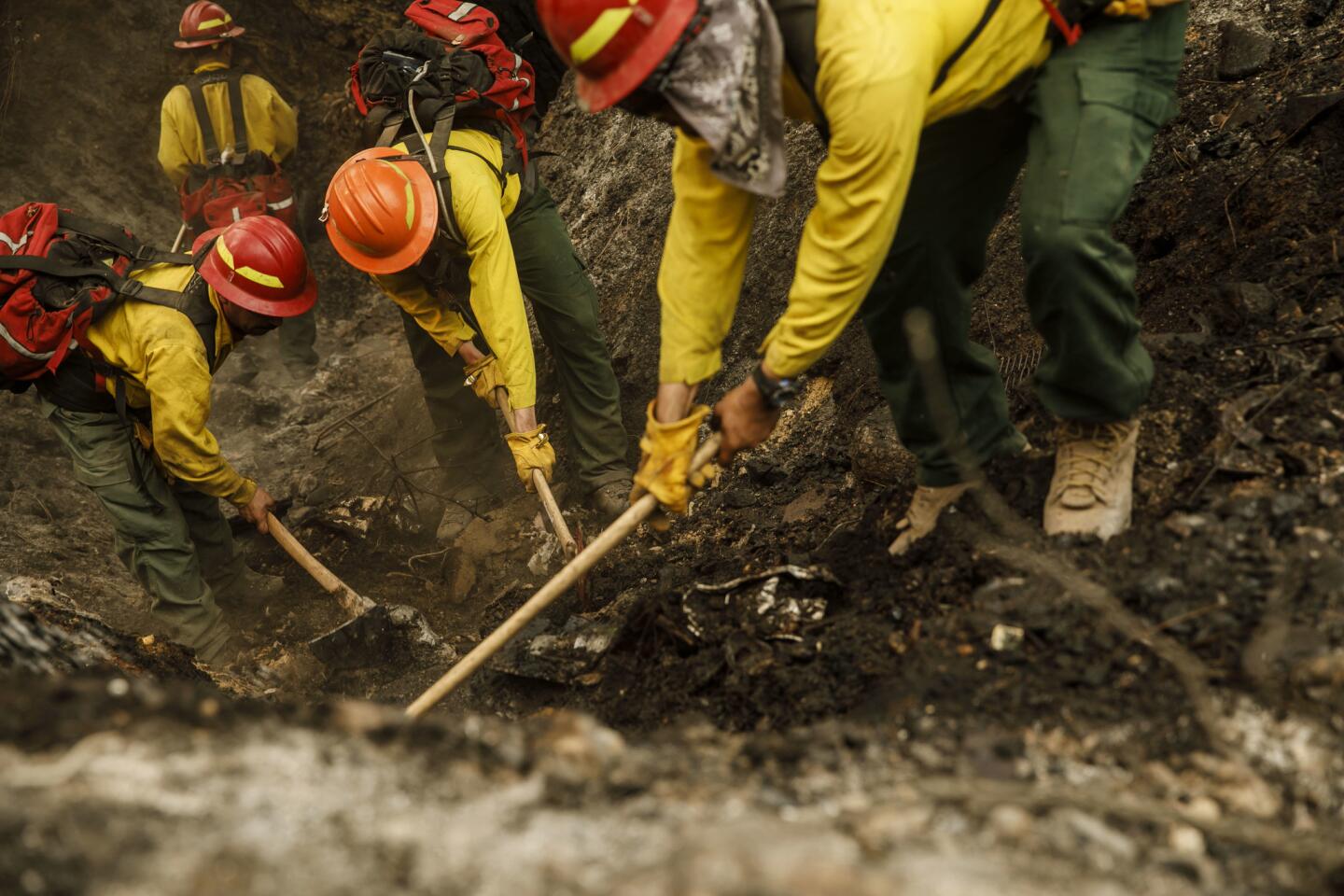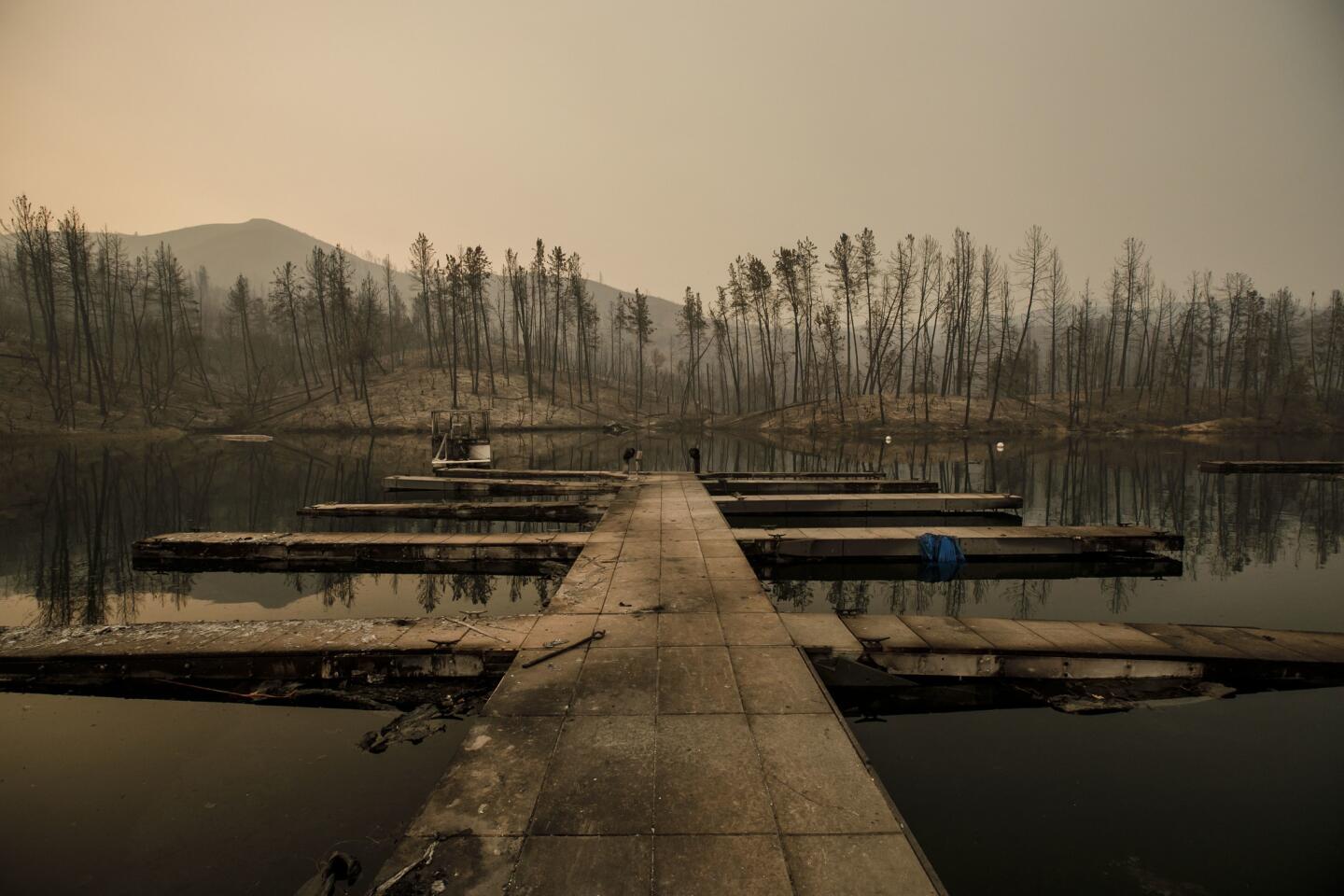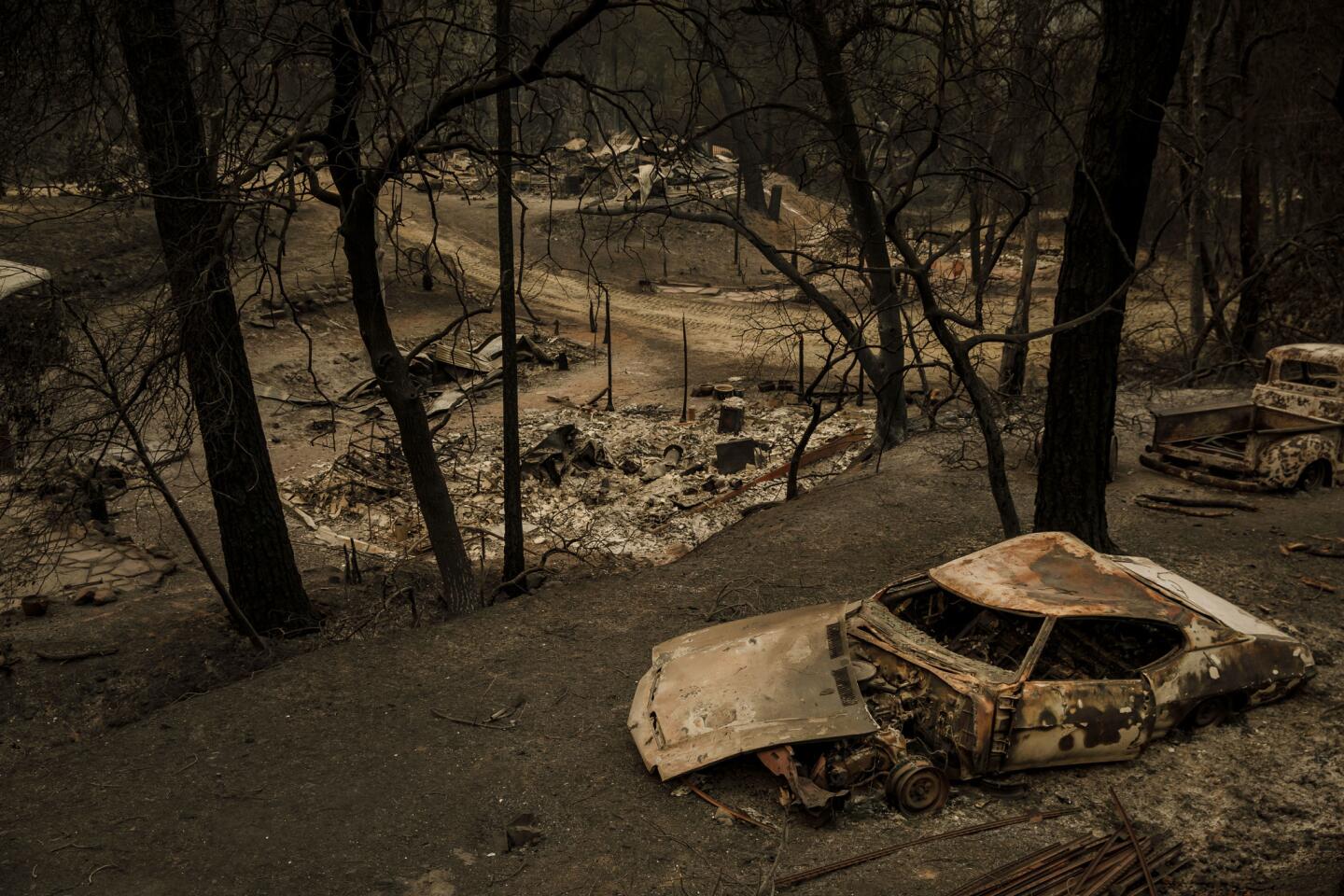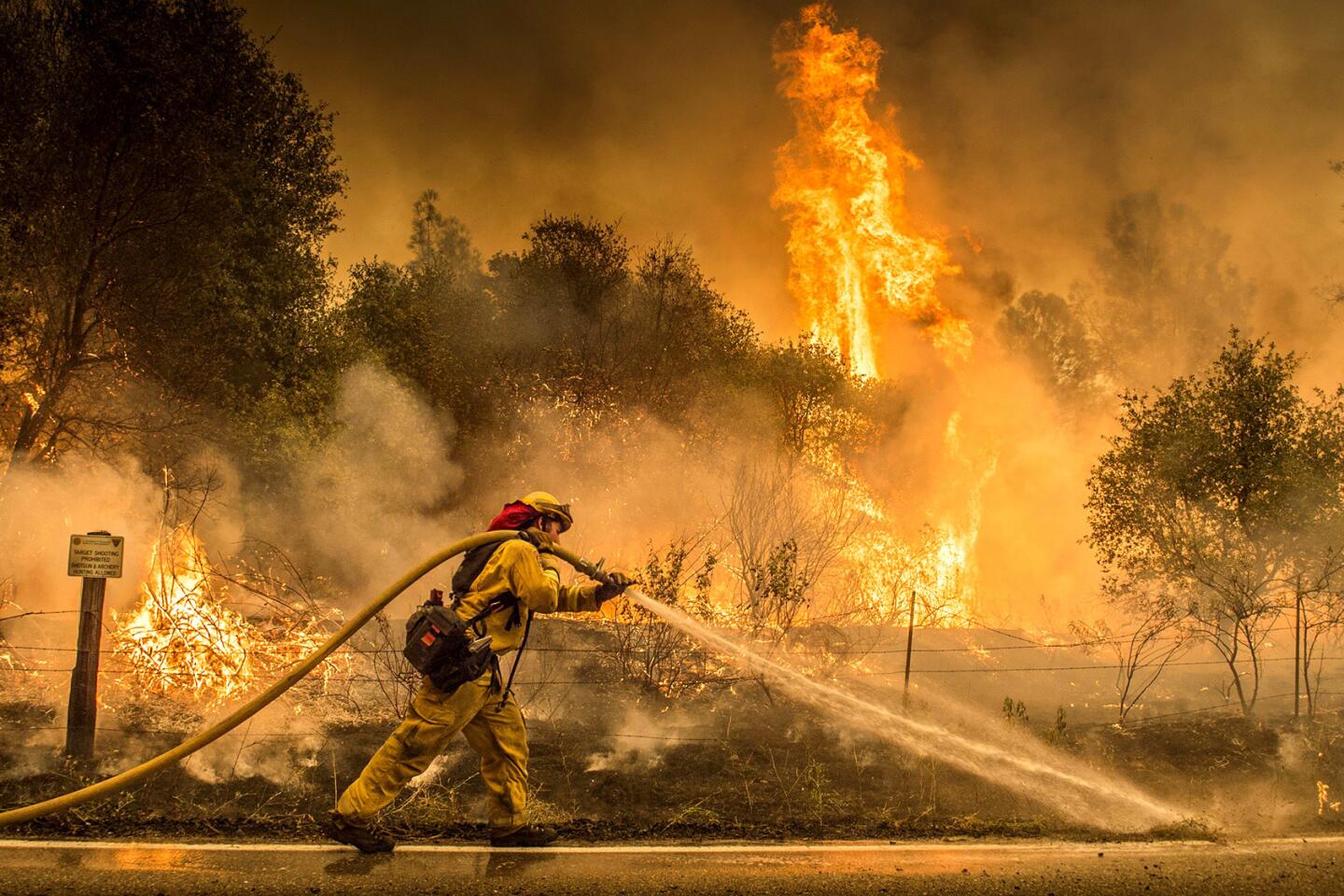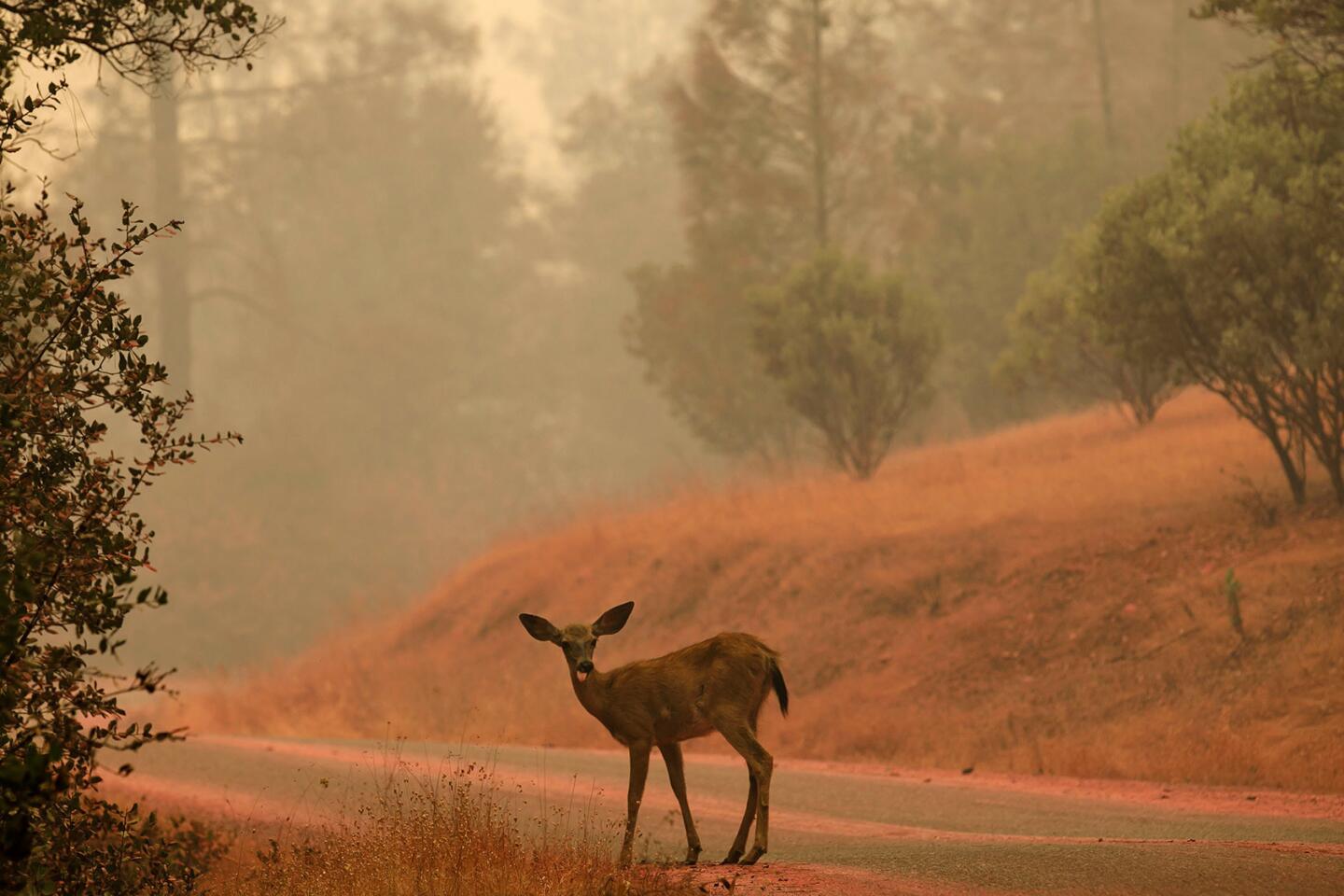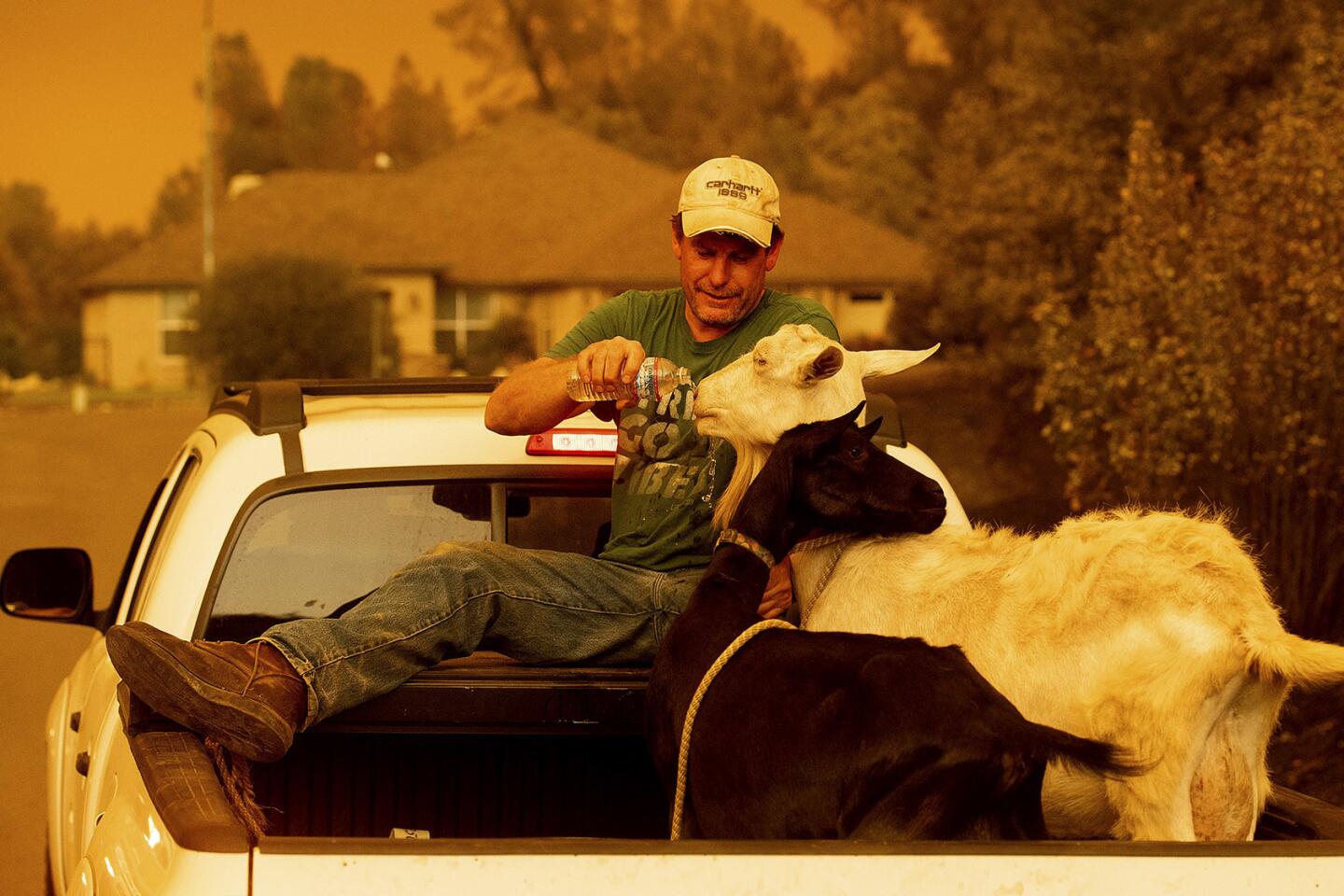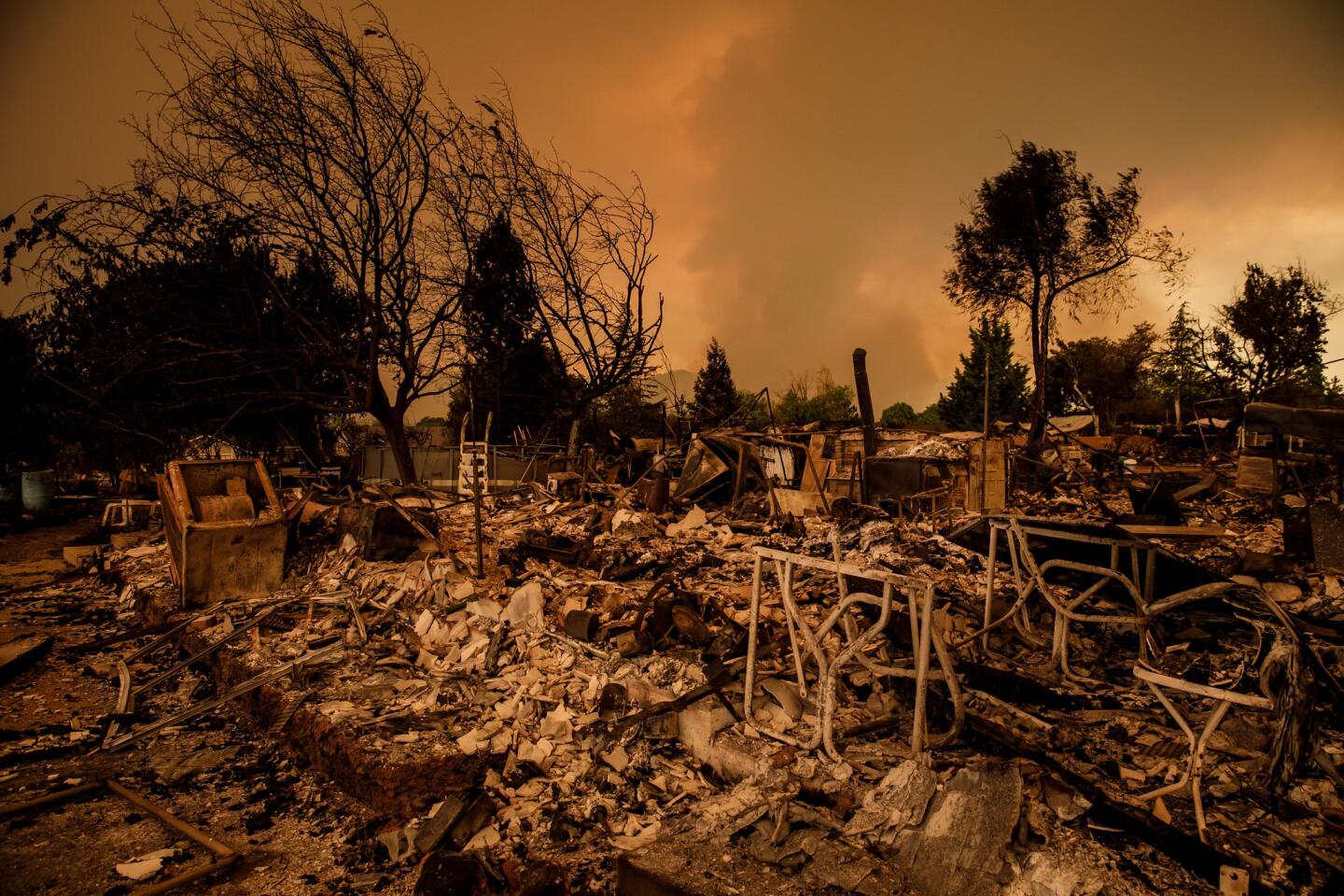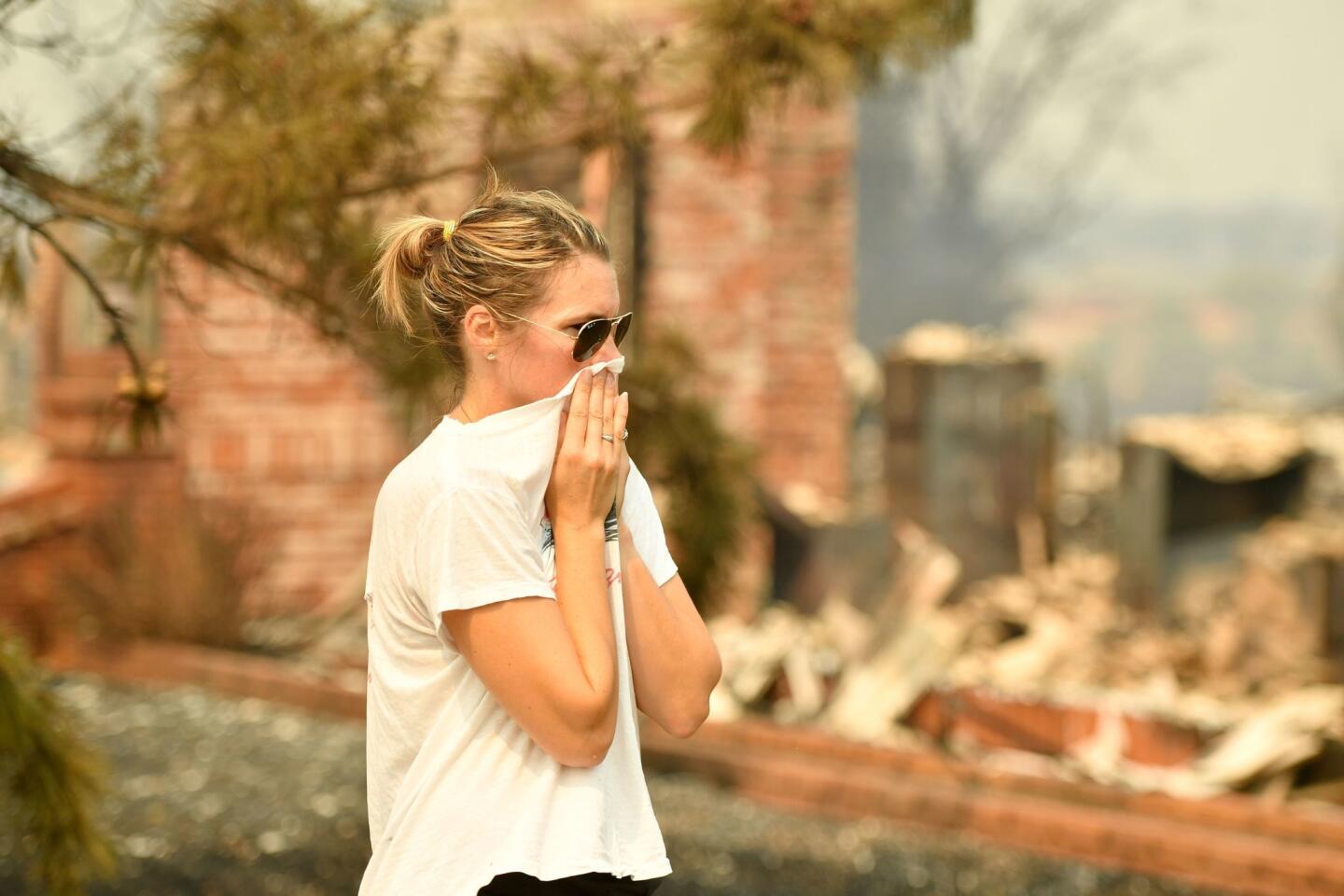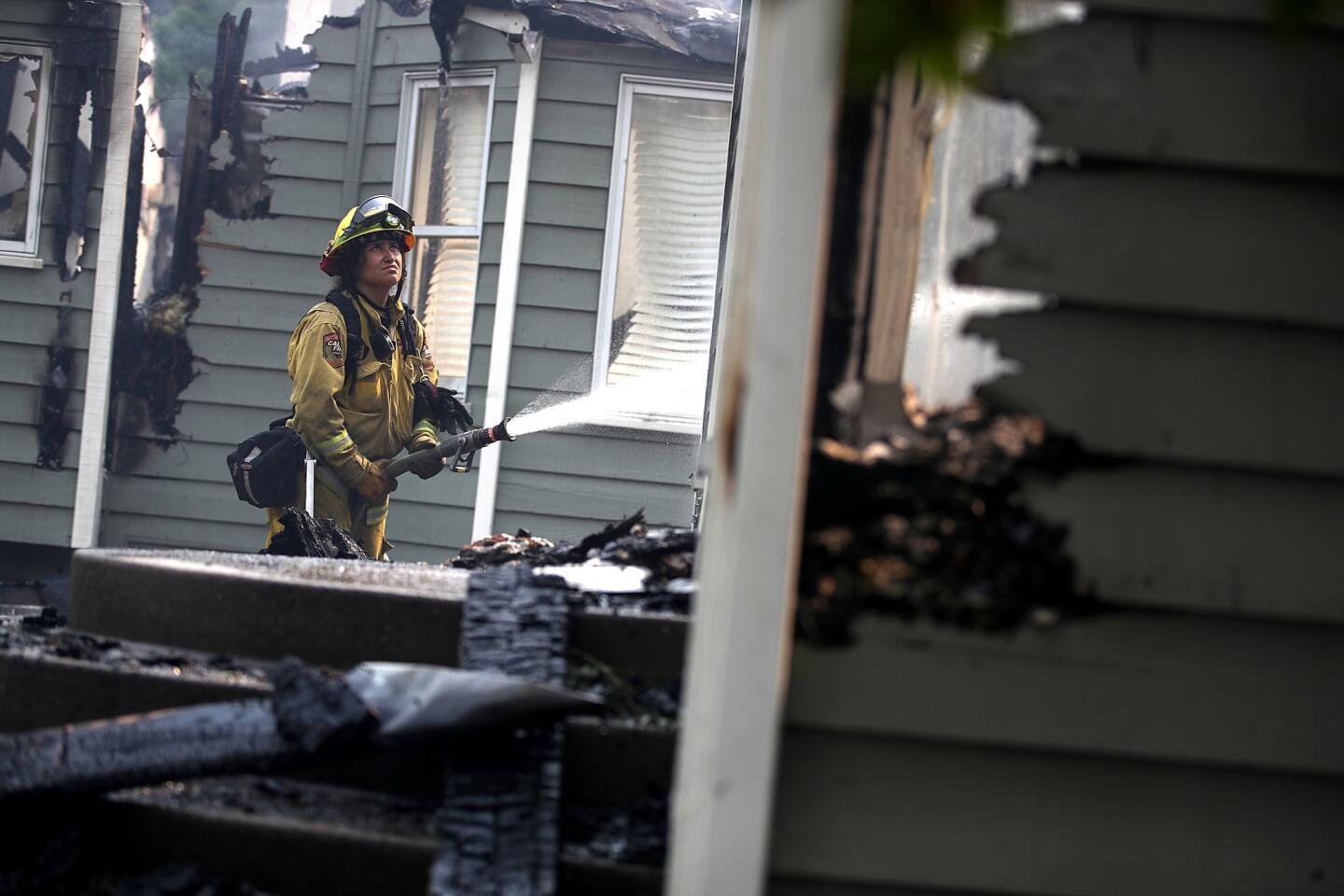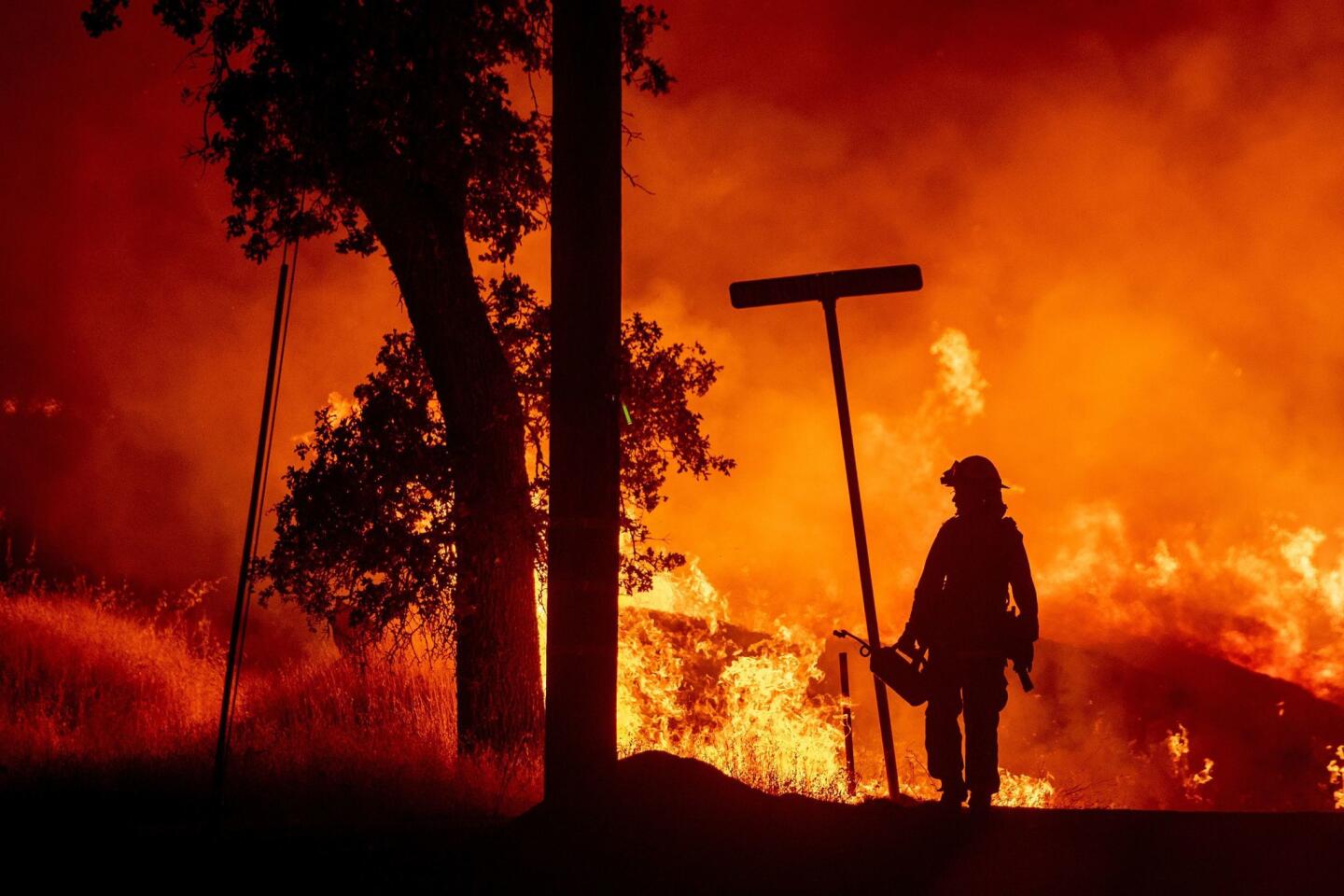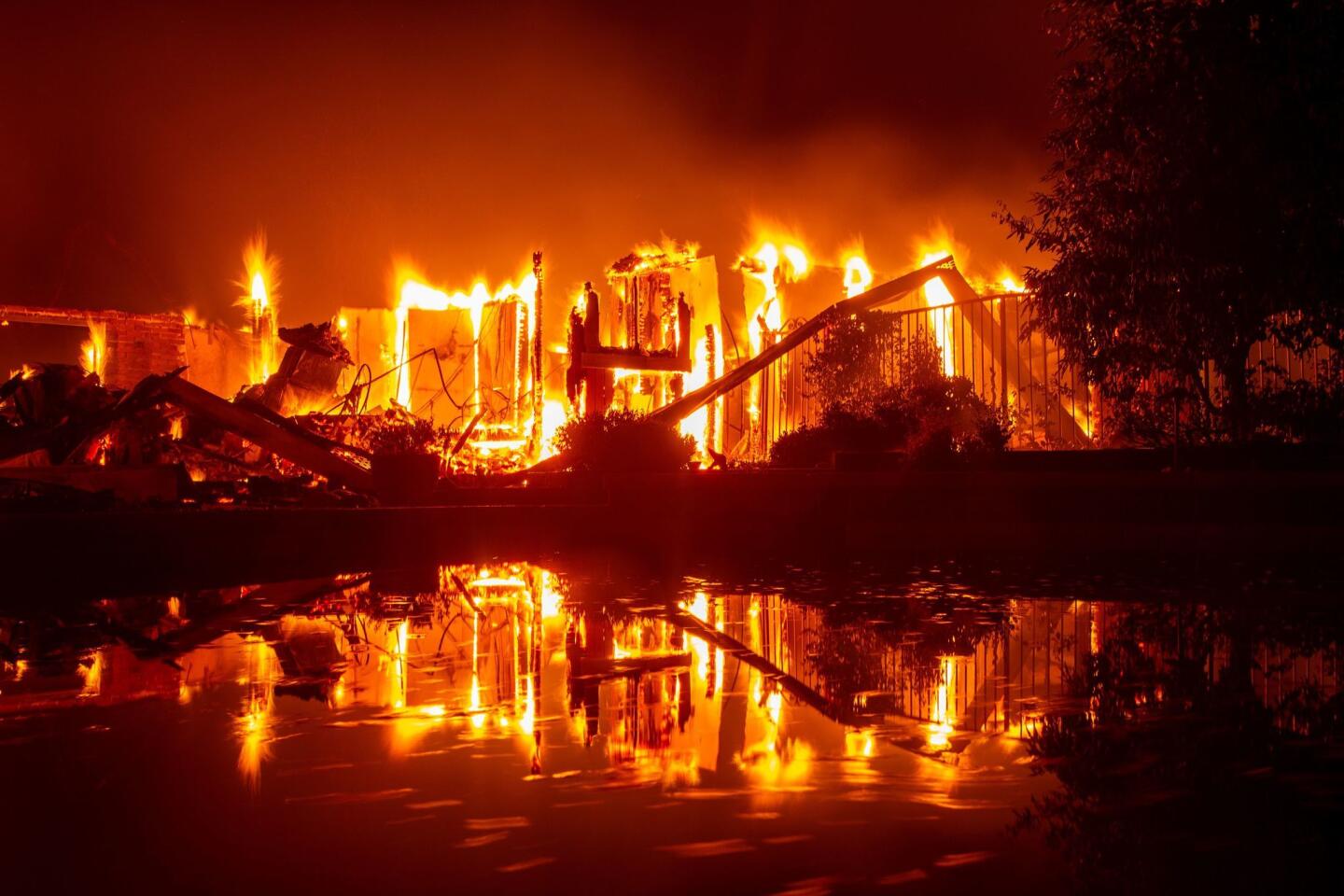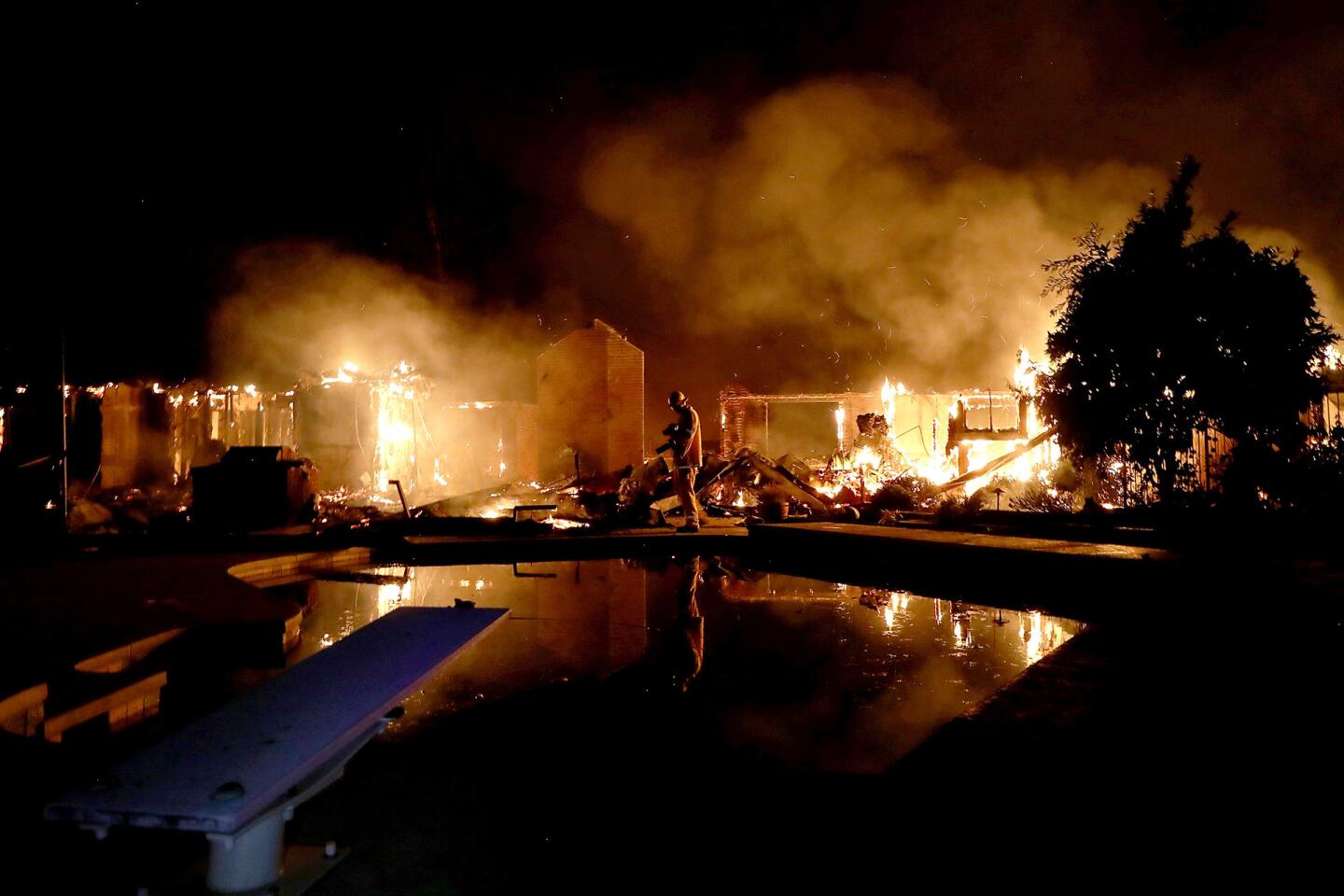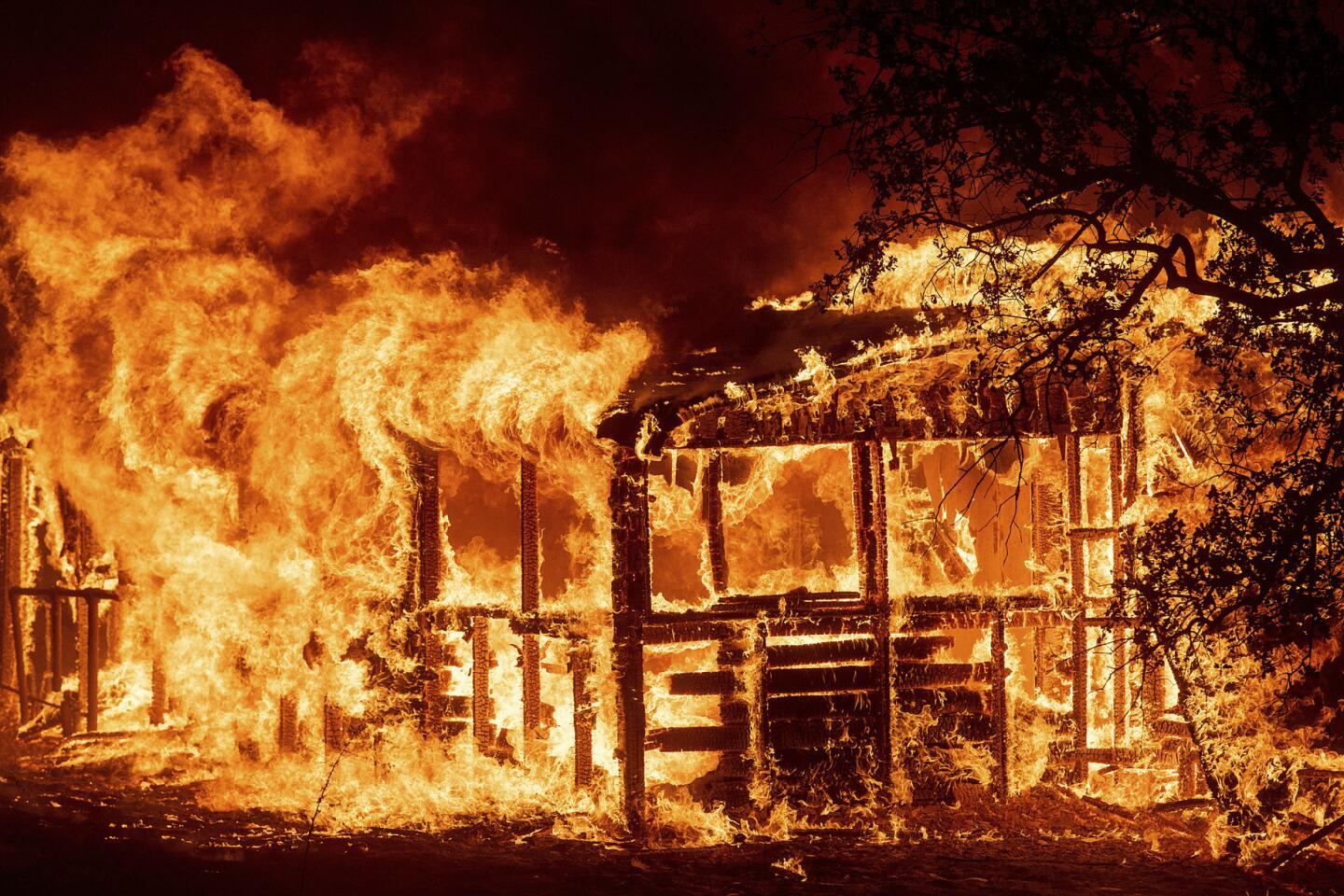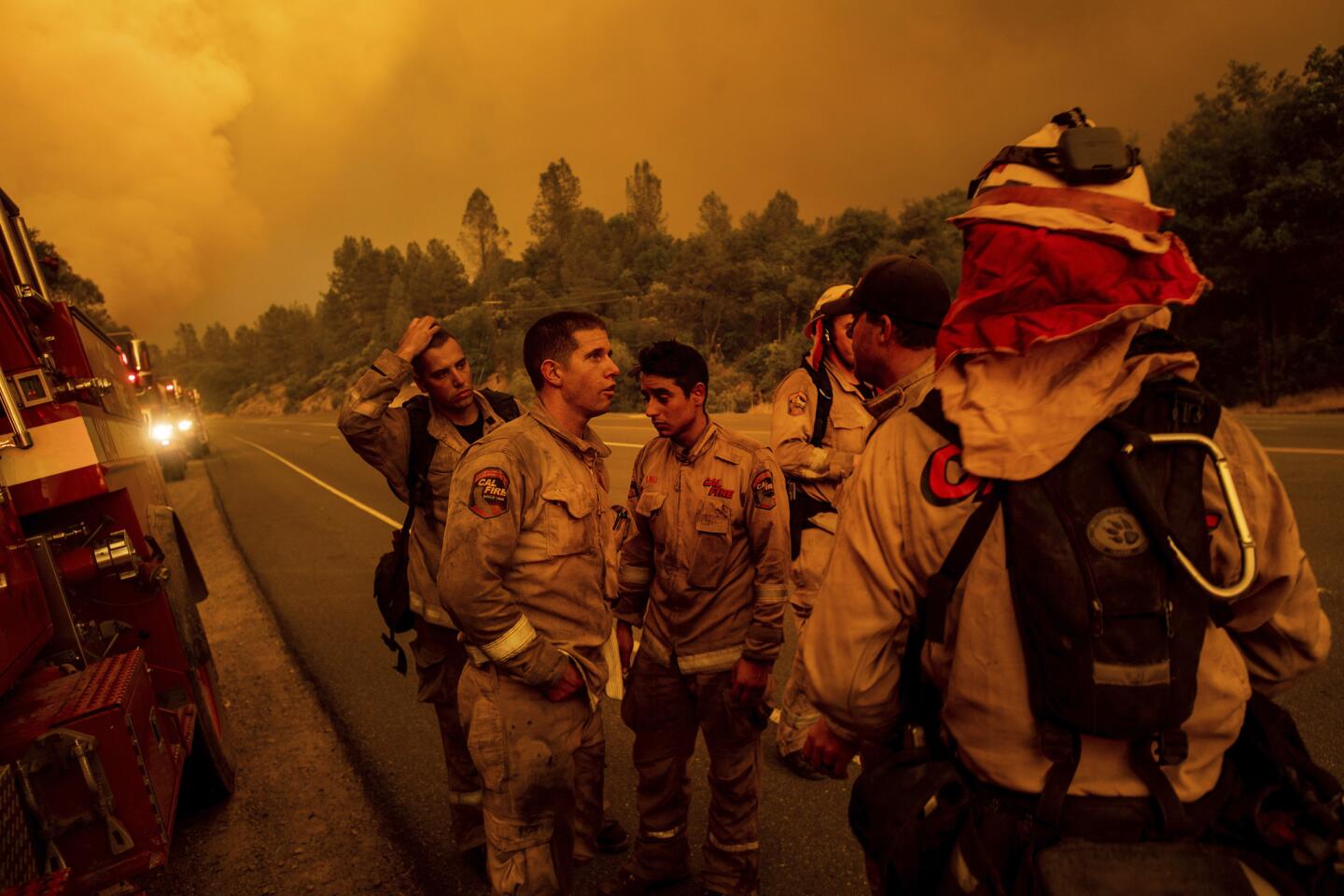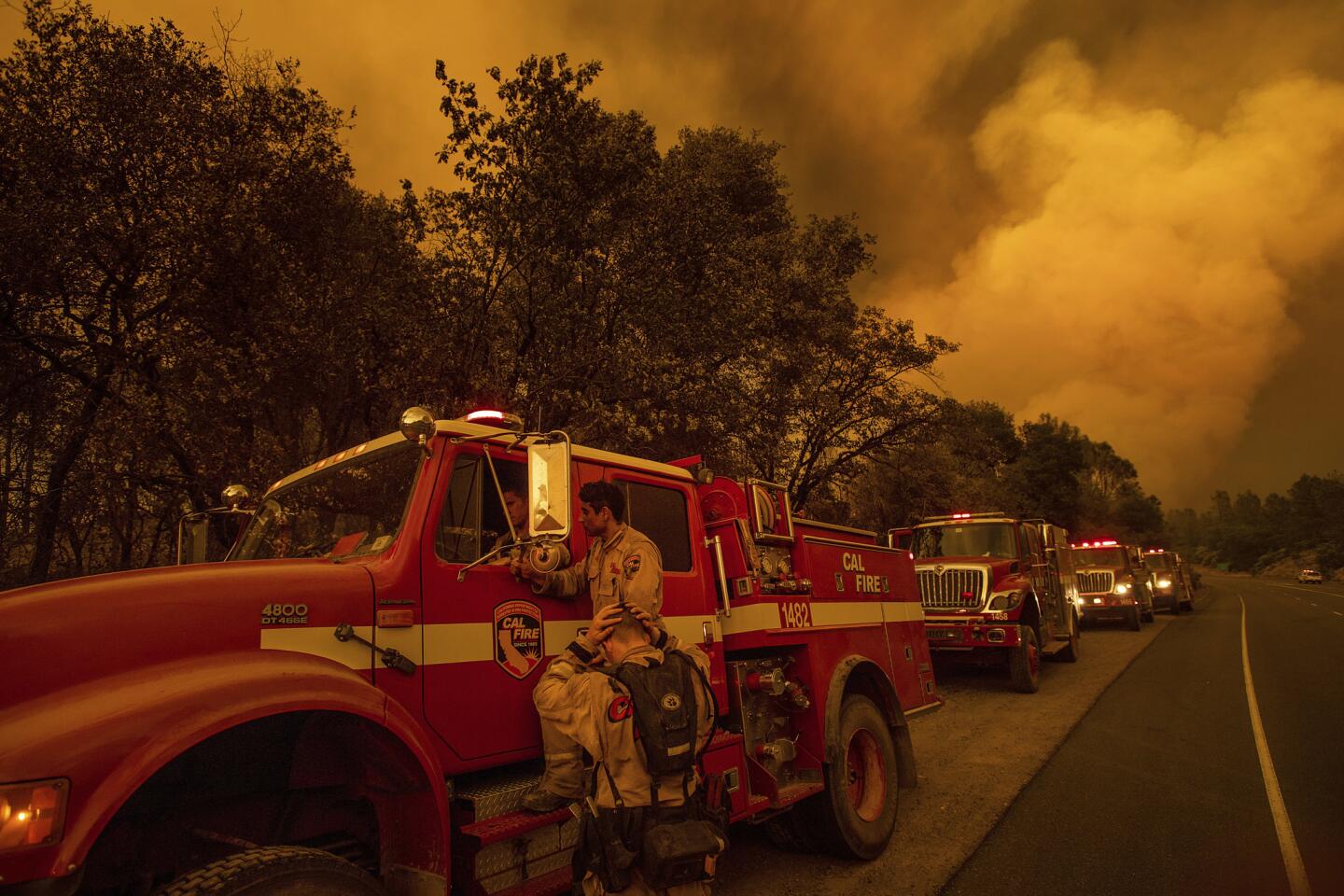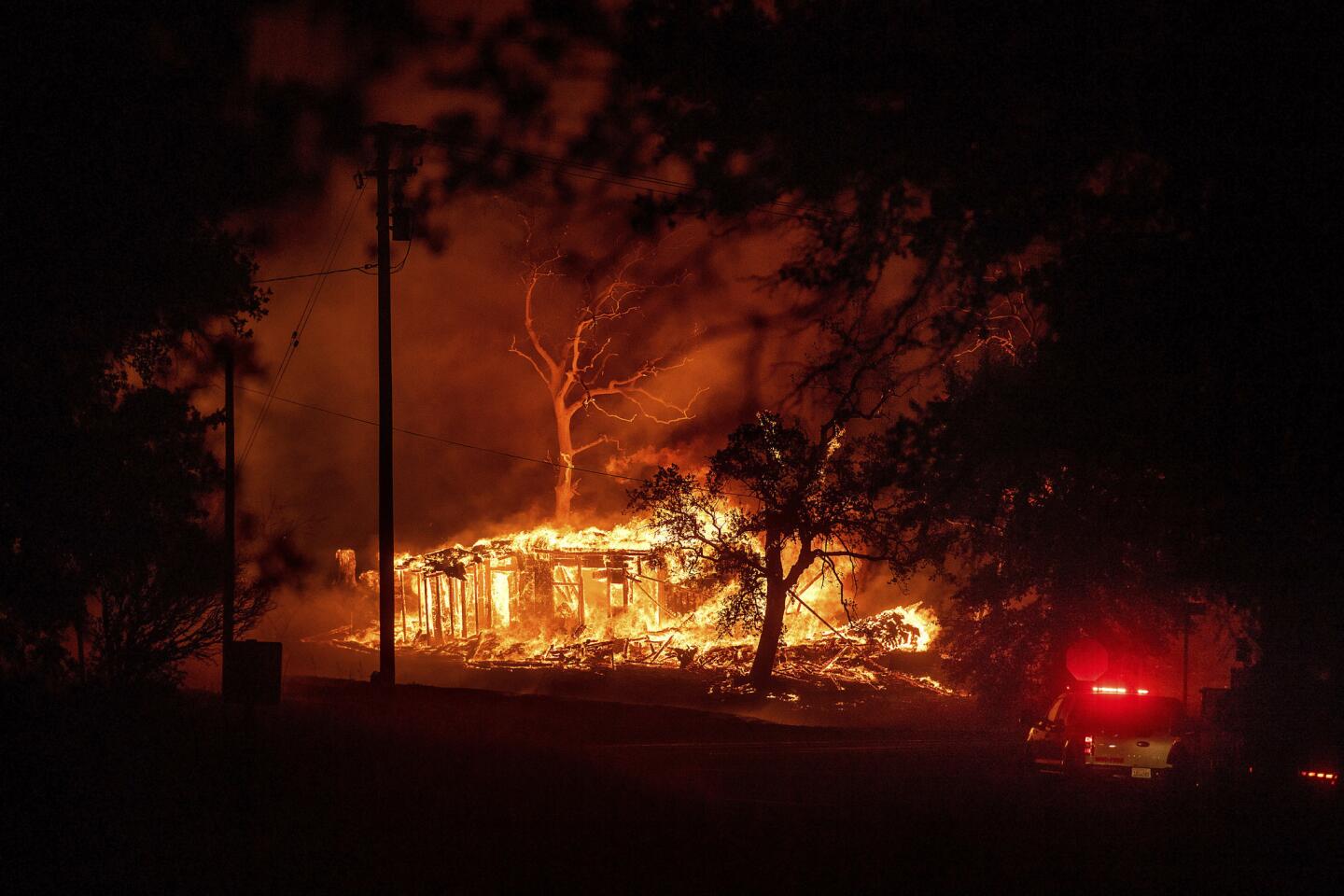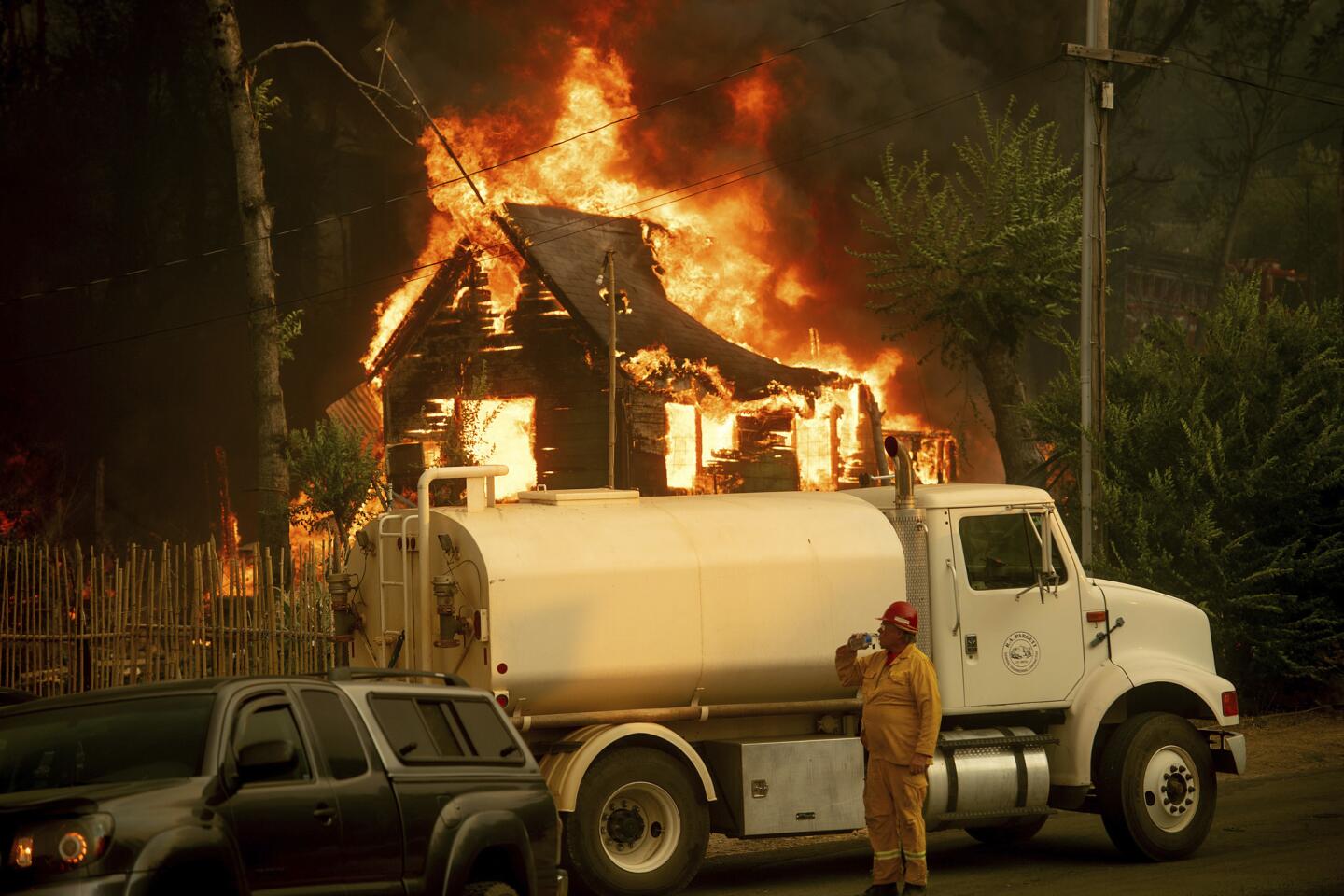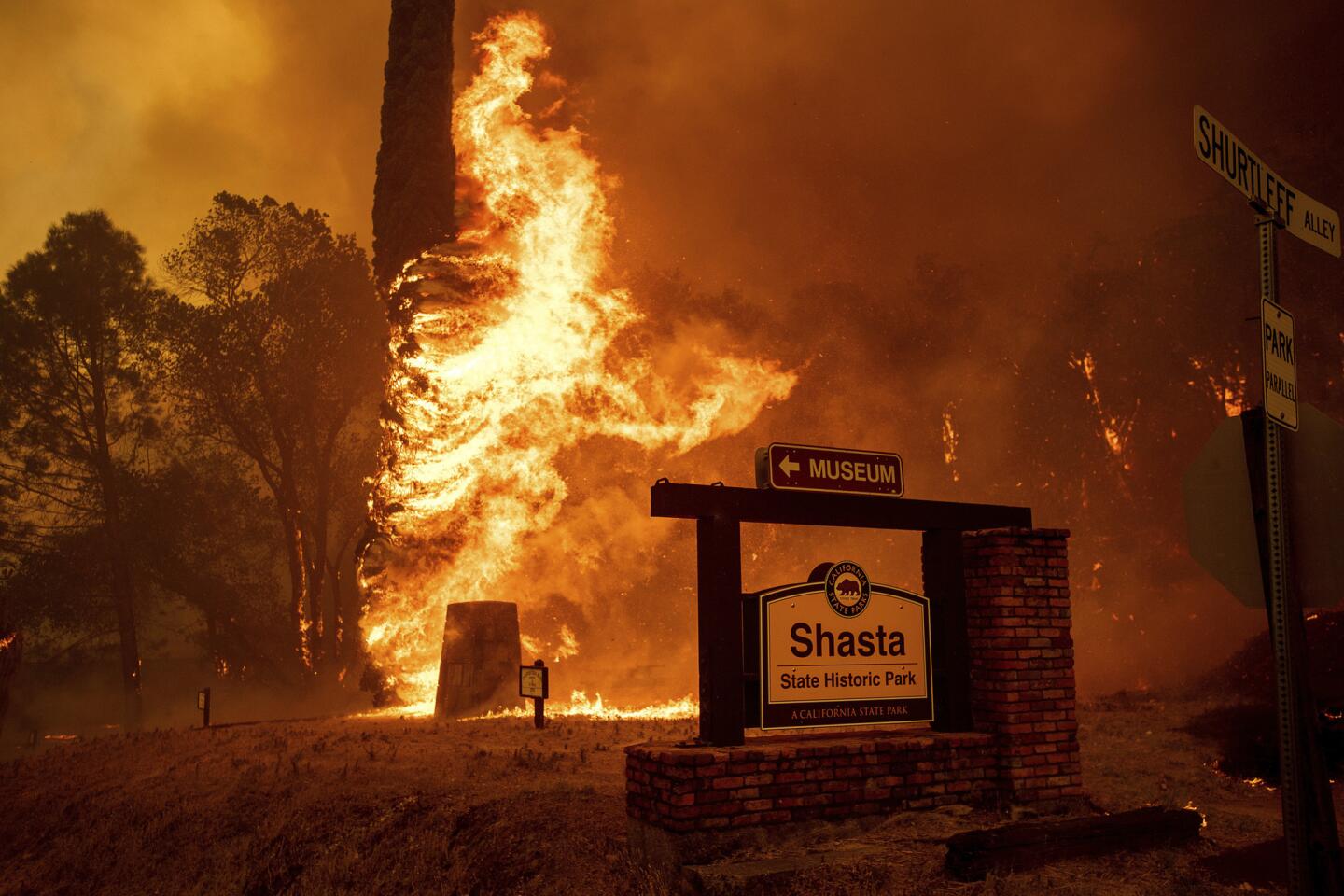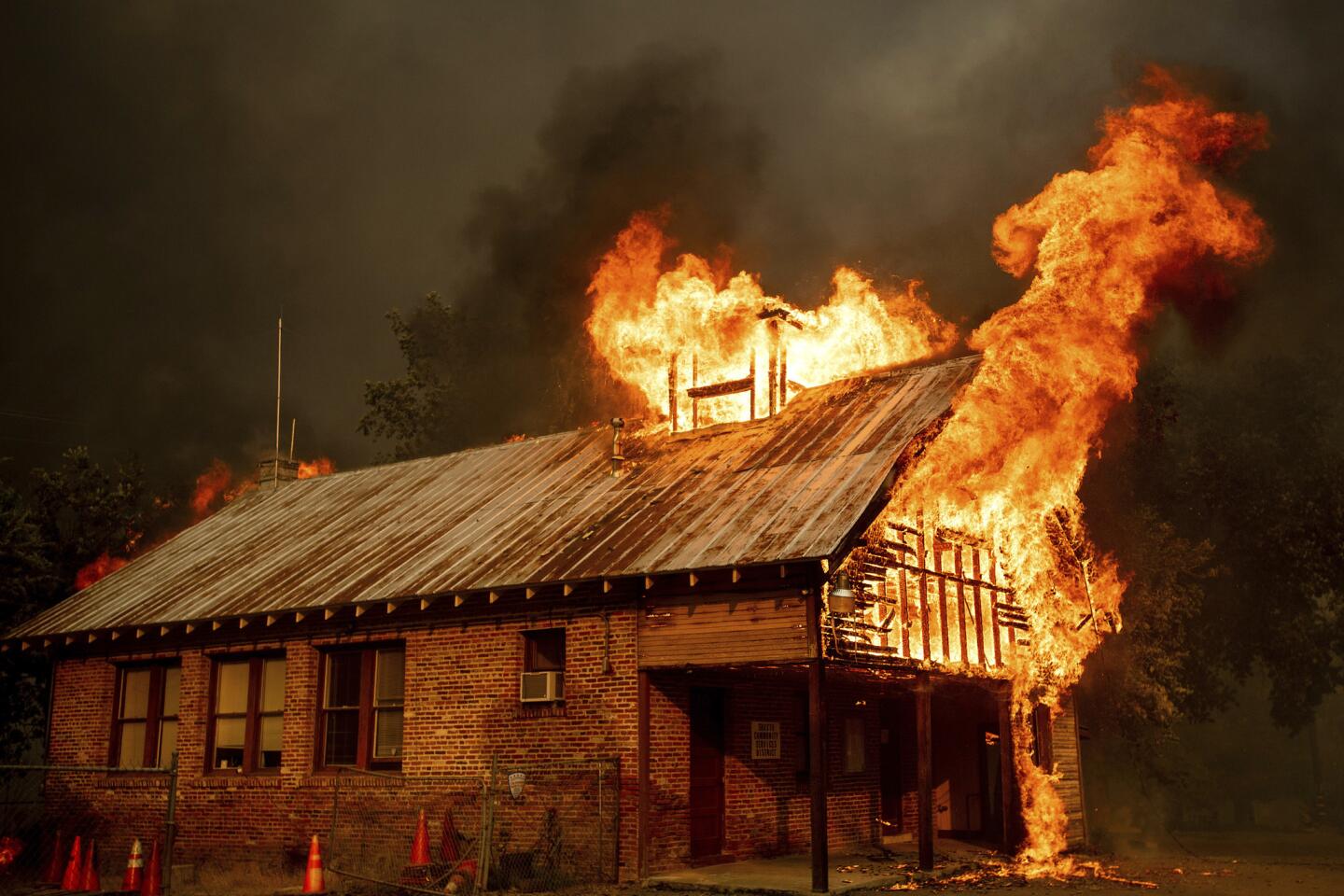Why California’s largest fire in history is so difficult to contain
- Share via
Each day on the front lines of California’s largest wildfire, firefighters start their shifts noting their safety zones and escape routes. Flames from the Mendocino Complex are still ripping through thousands of acres a day of steep, mountainous terrain packed with dead oak trees — standing and fallen — and littered with leaves and pine needles.
Crews are on especially high alert this week after a firefighter who traveled from Draper City, Utah, to help battle the blaze died Monday while working on an active stretch. Every five or 10 minutes, they’re encouraged to “look up, look around and make a sound.”
“We always talk about having our head on a swivel when we’re out on the fire line, because things could change — it could happen right there, in a snap of your fingers,” said Trevor Pappas, a firefighter with the California Department of Forestry and Fire Protection. “You have to have plan A, B, C, D — and sometimes E, F, G.”
Conditions have been ripe for the erratic fire behavior that has led to explosive growth of the Ranch fire, which along with the River fire makes up the 364,145-acre Mendocino Complex. The days are so hot and dry that whatever gains firefighters see overnight when the humidity goes up quickly fade when the sun hits the fuels and sucks the moisture out. Lately, winds have started to pick up about 5 p.m., gusting between 15 mph and 25 mph.
“That will really push a fire — no person on Earth runs 25 mph,” Pappas said. “We all want to go home at the end of the day, or the end of the shift, and make it back to our families.”
Residents around Clear Lake have been allowed to return home, but new evacuation orders were announced in the last few days for communities to the east and west of Mendocino National Forest, including Stonyford, Lodoga and Potter Valley, presenting another challenge for firefighters.
Unlike the Clear Lake area, which is fairly accessible by road, these communities are farther into the forest, which is so dense that it’s difficult to get in along the bumpy dirt roads.
“It’s hard for us to get crews in there to be safe. As you know, we lost a firefighter two days ago, which kind of made us step back and reevaluate,” Pappas said. “You could be doing everything right and still stuff goes wrong.”
Cal Fire spokesman Cary Wright said the persistent low humidity has allowed the fires to continue growing — once by 9,400 acres in just 24 hours. Temperatures were expected to drop and humidity levels to increase this week. Nighttime humidity rose significantly Tuesday for the first time since the fire started, Wright said.
Firefighters count on the drop in temperature and increase in humidity that usually occurs naturally overnight to allow them to make progress. But that hasn’t been happening in Lake County. Nighttime humidity levels have consistently been in the teens to 30% range. Tuesday night, the humidity reached 80%.
Despite the good news, the fight is far from over.
“We’ve had numerous calls from residents, saying, ‘Why is it still smoky?’ or ‘Is there another fire?’ ” Wright said. Shifting winds blow smoke to different areas at different times, and many people mistakenly think that because they’ve been allowed to return home, the fires aren’t burning anymore, he explained.
“Lake County communities have experienced a lot of fires, so as you can imagine, those folks are still on edge,” he said.
Firefighters are still struggling with the terrain as the fire approaches the Snow Mountain Wilderness. They are using natural and man-made barriers ahead of the fire to the north and are placing most on-the-ground resources to the east and west where homes are threatened, Wright said.
Wright said the Mendocino Complex has expanded to four counties: Mendocino, Lake, Glenn and Colusa. And on Aug. 11, the Ranch fire surpassed the size of December’s 281,893-acre Thomas fire, making it the largest single fire in recorded California history.
More to Read
Sign up for Essential California
The most important California stories and recommendations in your inbox every morning.
You may occasionally receive promotional content from the Los Angeles Times.

